Jaybee Travel Private Bus Tour Of Chicago
Meet Your Guide: Ronnie Frey of @doorwaysofchicago
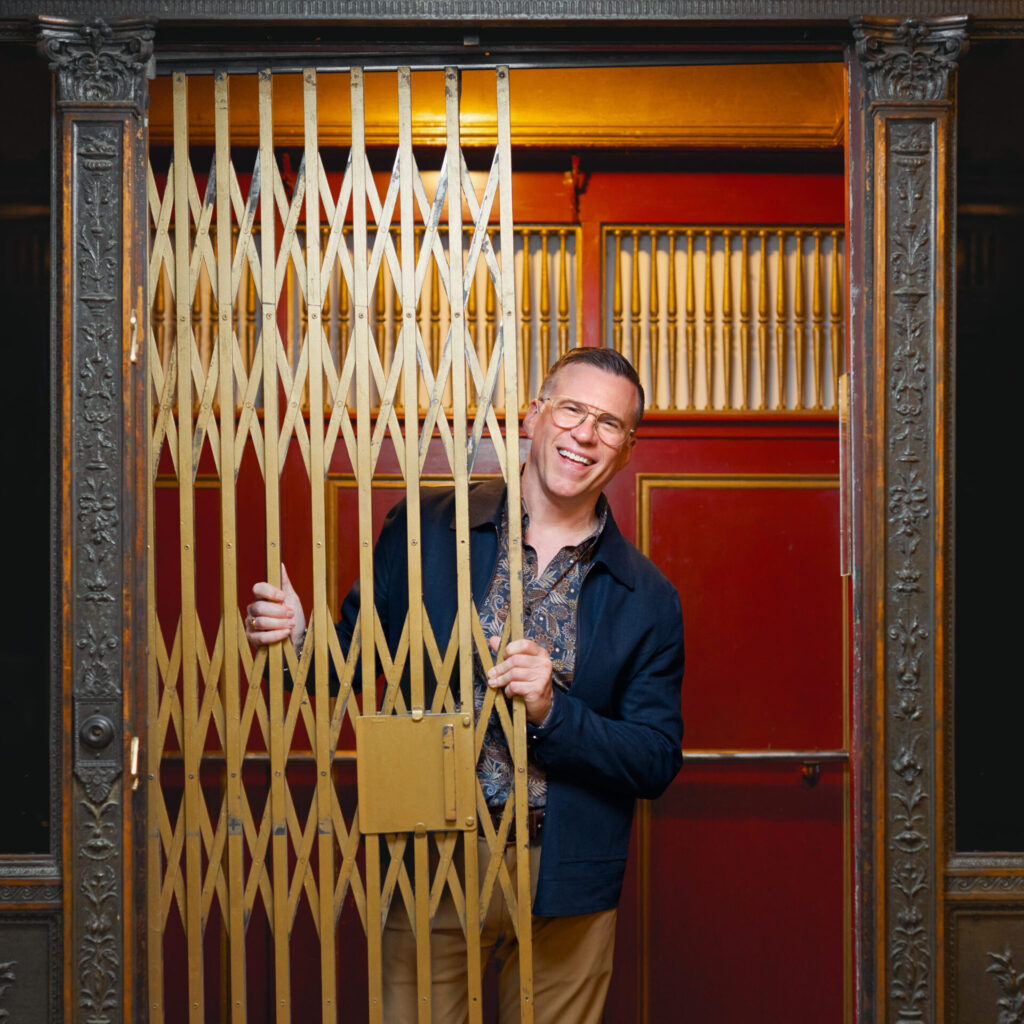
- Hi, I’m Ronnie! I’m an interior designer who’s obsessed with cool buildings, vintage vibes, and the stories hiding behind Chicago’s architecture.
- During the pandemic, I started wandering around the city to get our of the house, snapping photos of interesting doorways and posting them on Instagram. That turned into something bigger-my creative outlet, my meditation, and eventually… my job!
- In 2021, I launched my first walking tour and was instantly hooked. Since then, I’ve hosted hundreds of guests, created six of the most popular Chicago walking tours, and built one of the city’s biggest architectural & lifestyle Instagram accounts: @doorwaysofchicago
Tree Studio Building

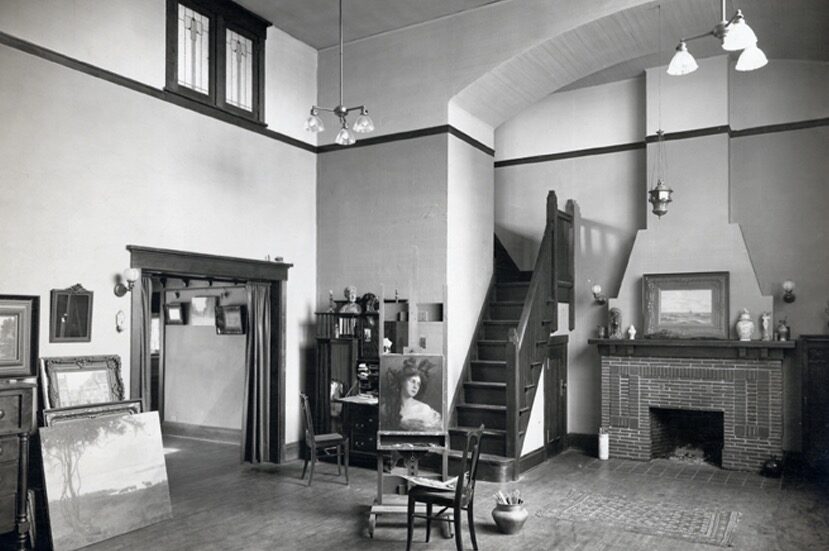

Tree Studio Building was designed in 1894 as artists’ residences and have been home to over 500 artists.
Some of the great artists which have called the Tree Studios home include sculptors Albin Polasek, illustrator James Allen St. John; muralist John Warner Norton, painters Ruth Van Sickle Ford and John Singer Sargent; and actors Peter Falk and Burgess Meredith.
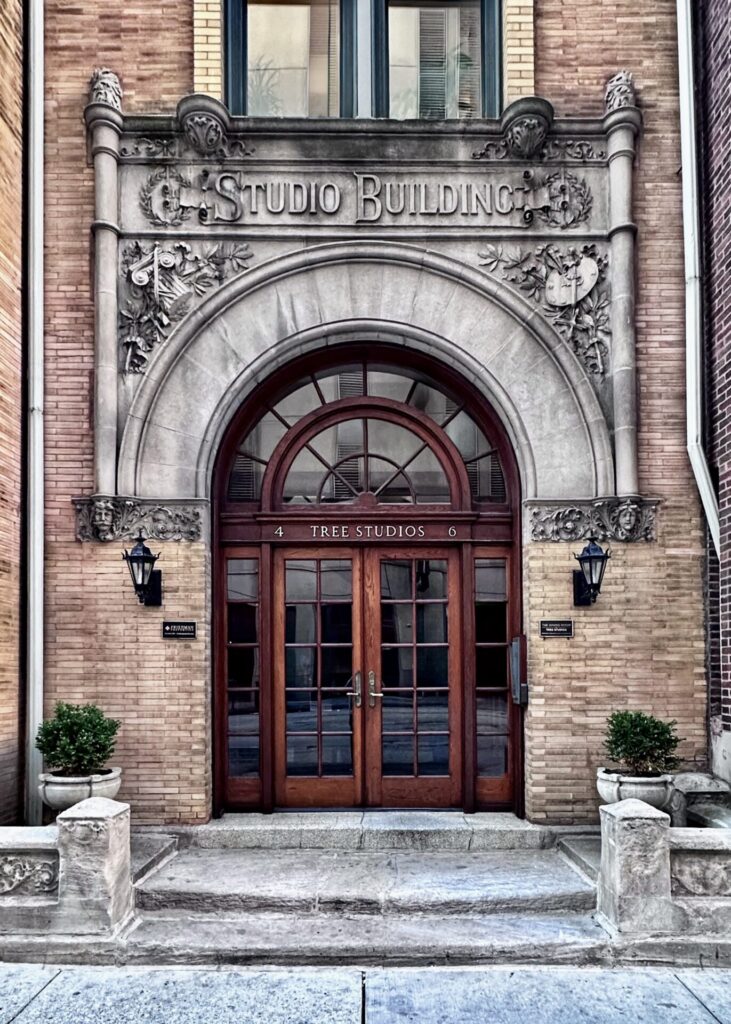
Holy Name Cathedral

Many mob funerals were held at Holy Name Cathedral.

Across the street from the church was the North Side Gang headquarters in a flower shop called Schofield Flowers. This is where mobster “Dion” (Dean O’Banion) was offed.
Now it is one of the tallest skyscrapers in the city at 76 stories and is a luxury condo/apartment building called One Chicago.
La Salle Flowers
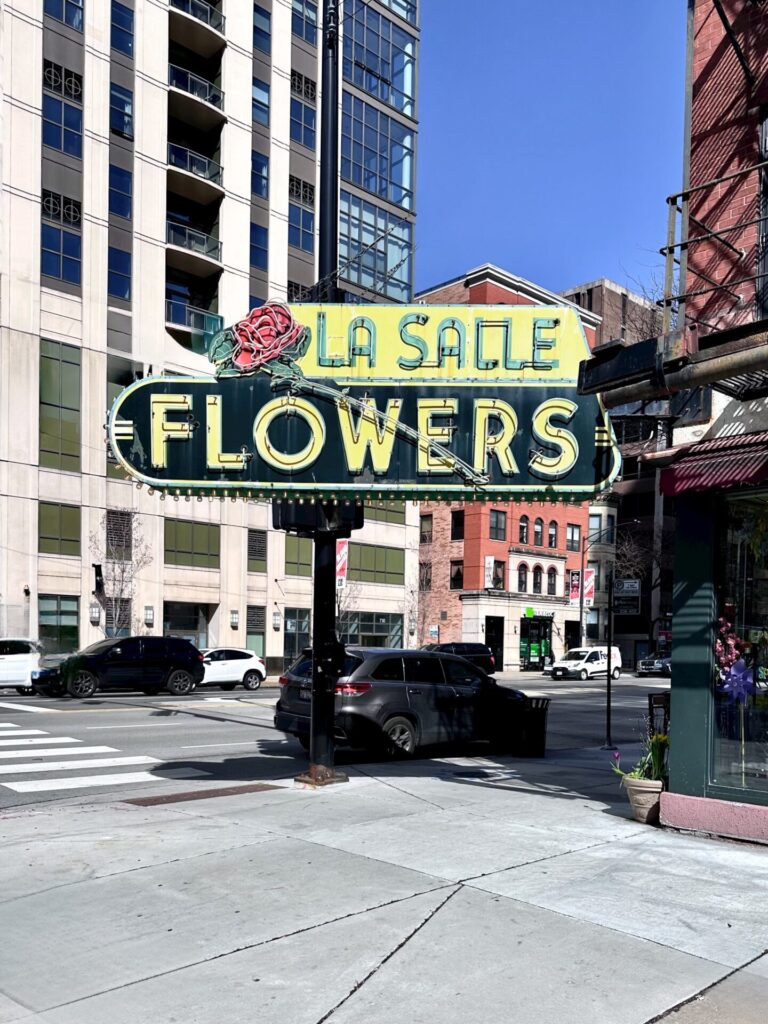
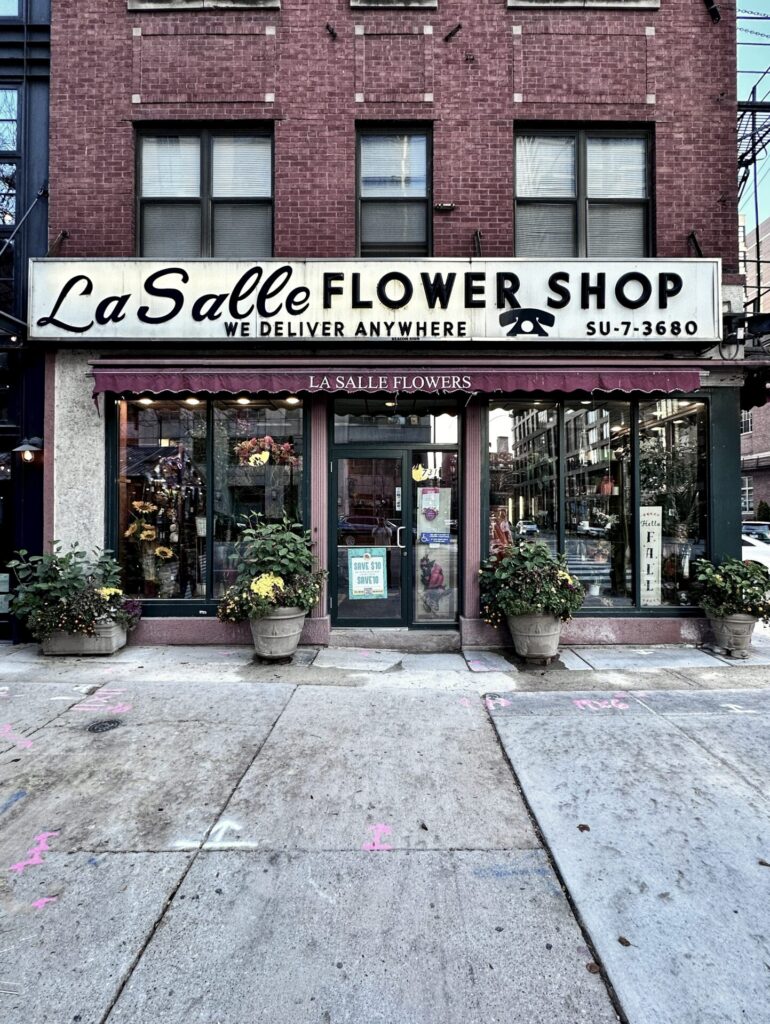
Landmarks
- Marina Towers (Corn Cobs) – Bertrand Goldberg – 1967
- Wrigley Building – Graham, Anderson, Probst & White – 1920 (white terra cotta with clock face)
- Elevated Train (EL)
- Theatre District
- Chicago Theater by Balaban & Katz – Raap & Raap – 1921 – The theater would become the flagship for 28 theaters in the city and over 100 others in the Midwestern United States that B&K operated in conjunction with the Paramount Publix chain
- James Nederlander Theater by B&K – Raap & Raap – 1926 (Oriental Theater)
- Cadillac Palace Theater – Raap & Raap – 1926
New Google Midwest HQ
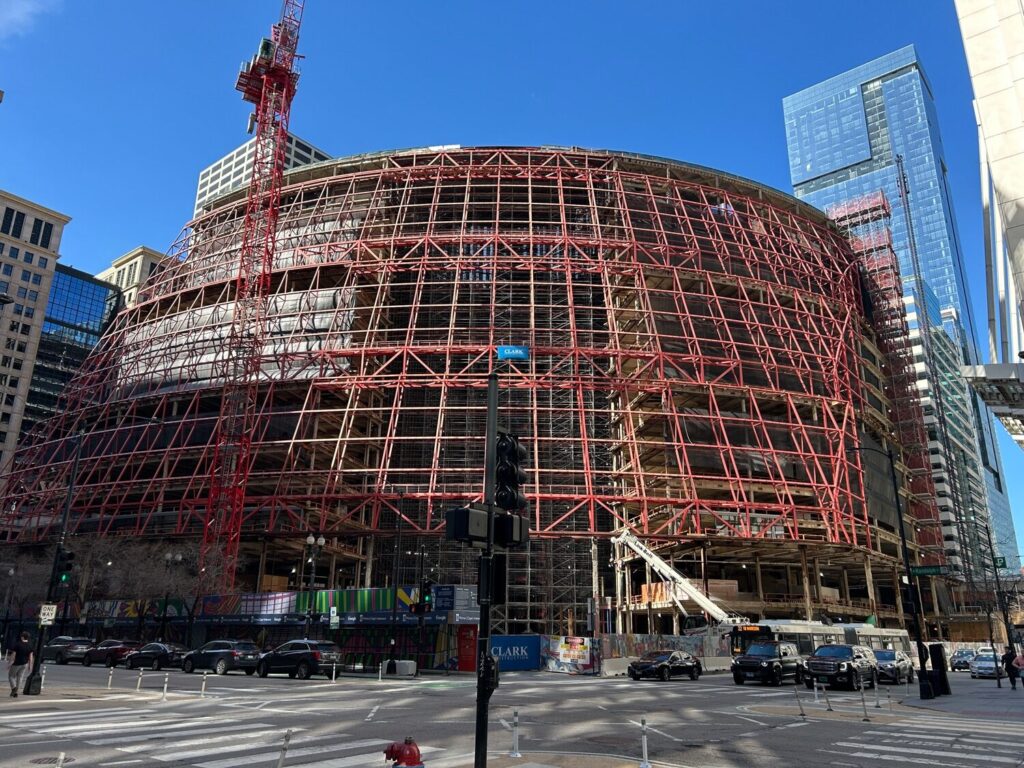
Formerly the James R. Thomson Center designed by famous architect, Helmut Jahn in 1985.
Great example of Postmodern Architecture. It was going to be demolished before Google bought it.

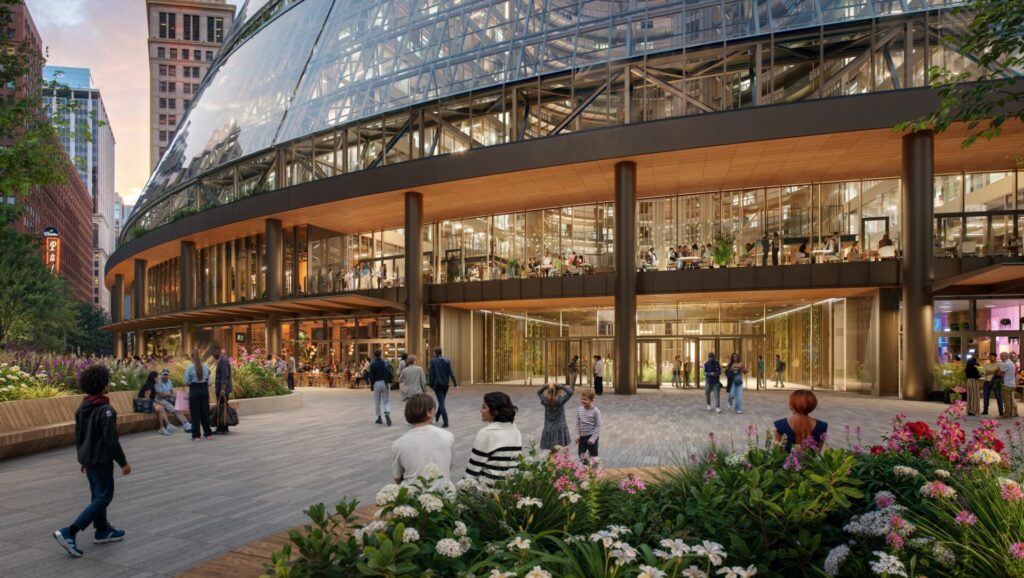
One North La Salle Building

Architect: Vitzthum & Burns
Style: Art Deco
Circa 1930
It is built near the presumed site of René-Robert Cavelier, Sieur de LaSalle’s 17th-century camp. The themed exterior and interior details are of early explorers and their interaction with Native Americans of the region.
The exterior carved limestone panels were executed by French sculptor Leon Hermant.
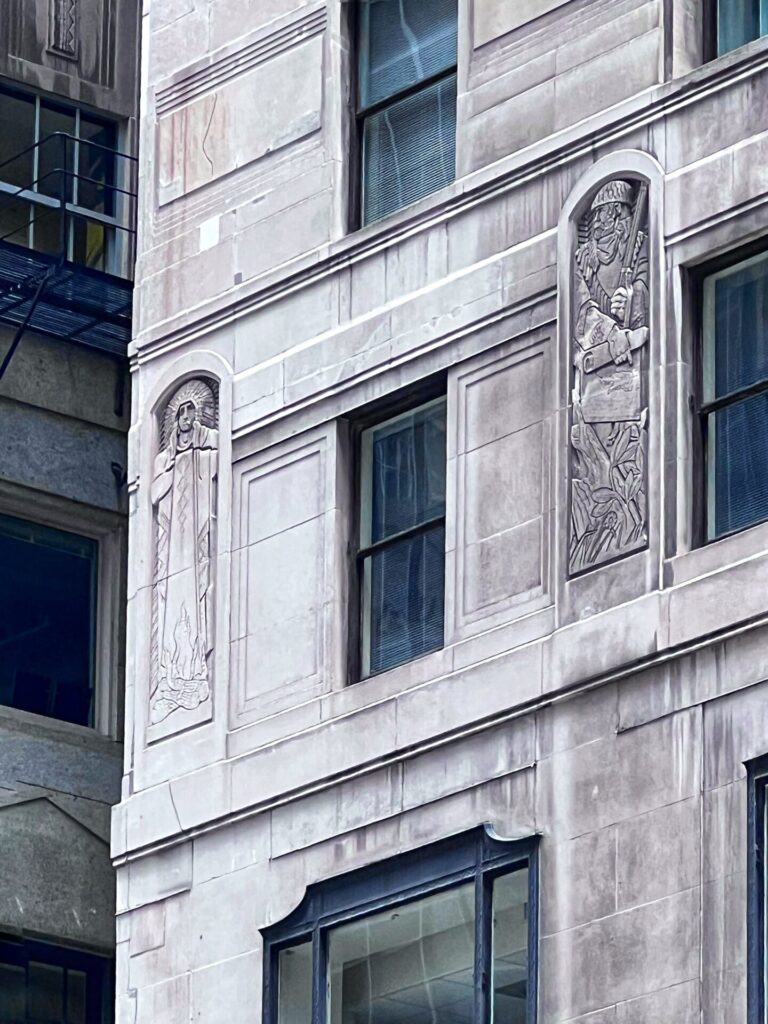
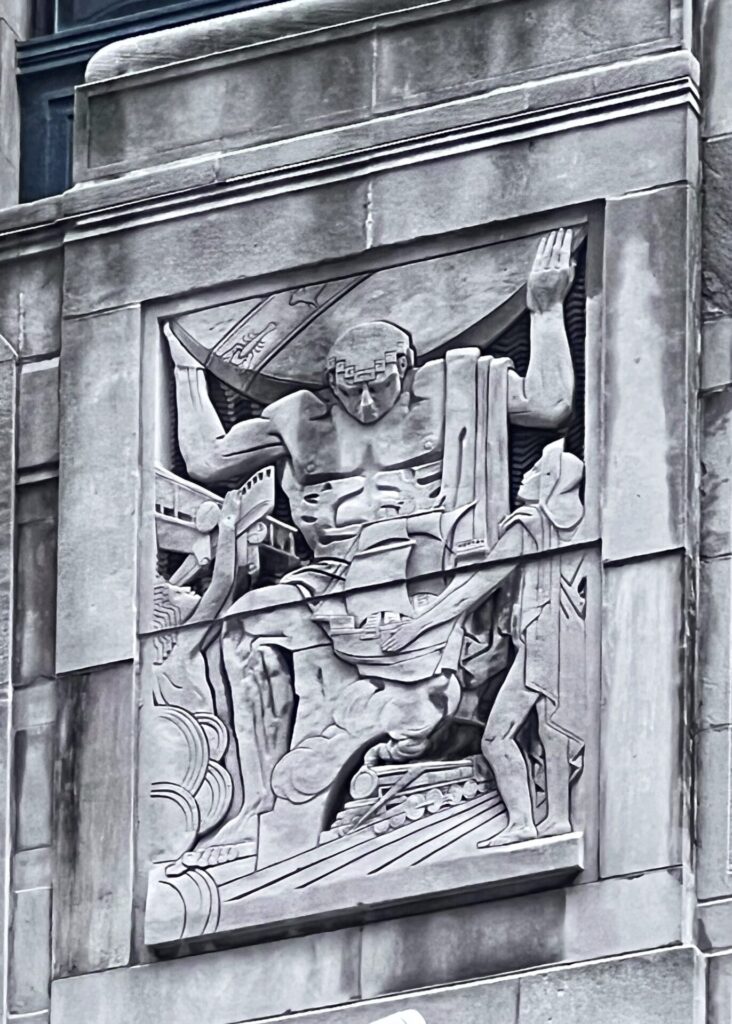


Field Building / Former Home Insurance Bldg.

Built as Marshall Field Office Bldg.
Architect Graham, Anderson & Probst
Art Moderne Style (vs. Deco)
Circa 1934
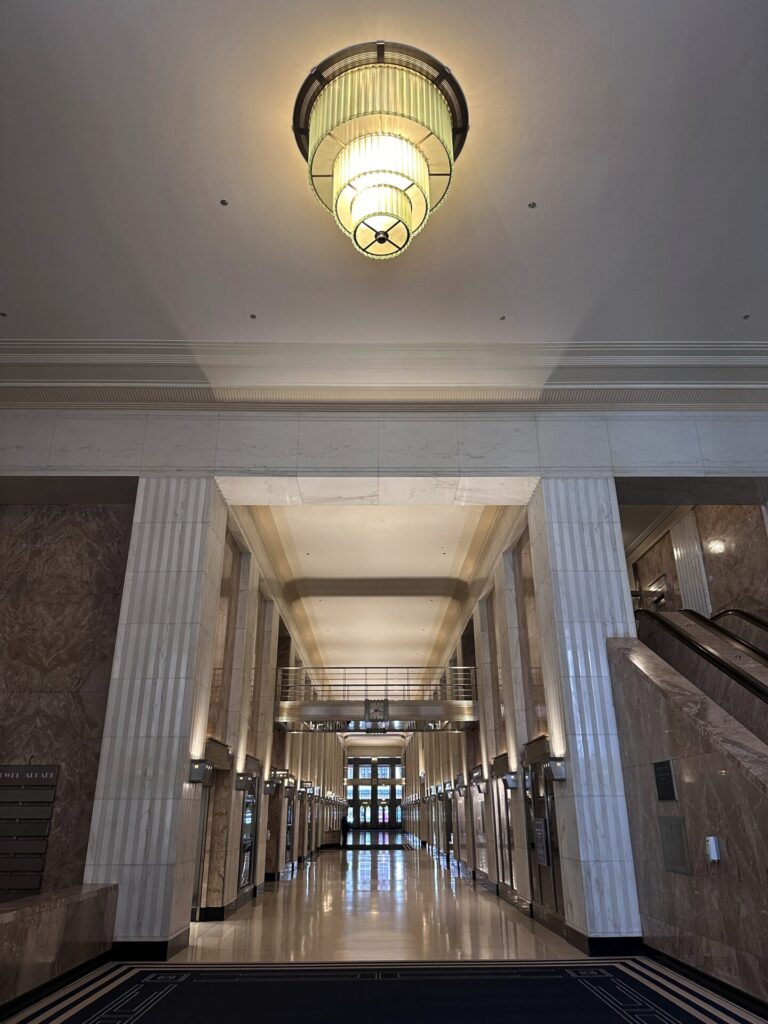

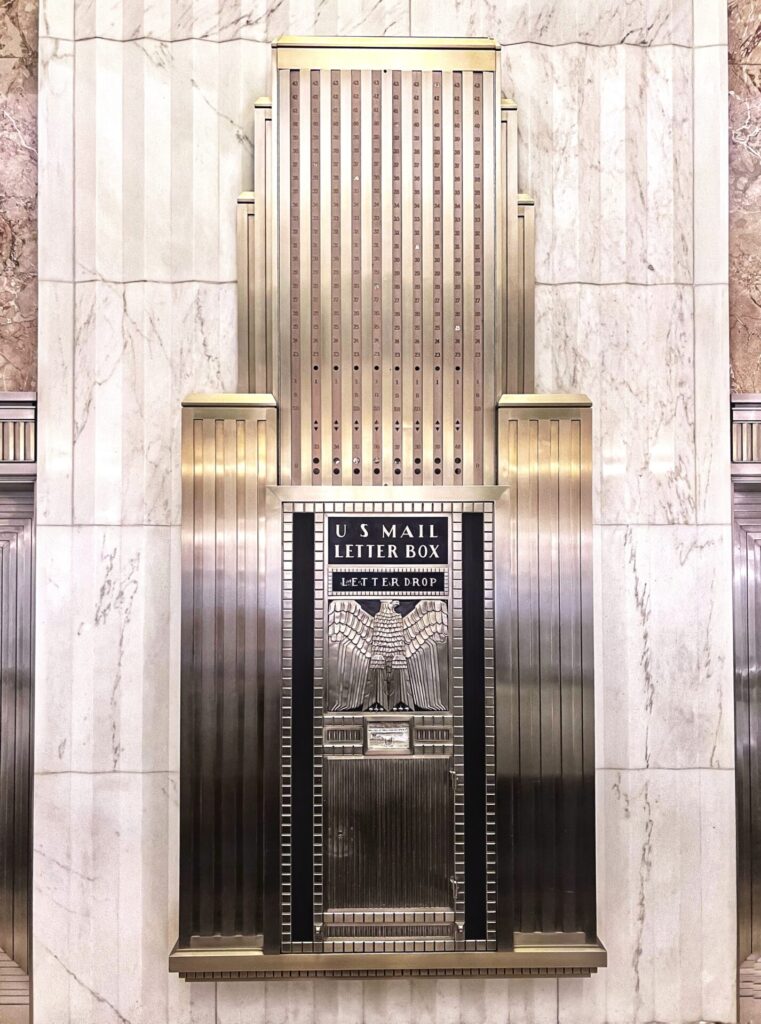

Previously on this site was the Home Insurance Building (circa 1884).
At 138 feet tall it was the first skyscraper in the world supported by a fireproof structural steel frame – designed by the grandfather of skyscraper architects, William Le Baron Jenney.
Rookery Building

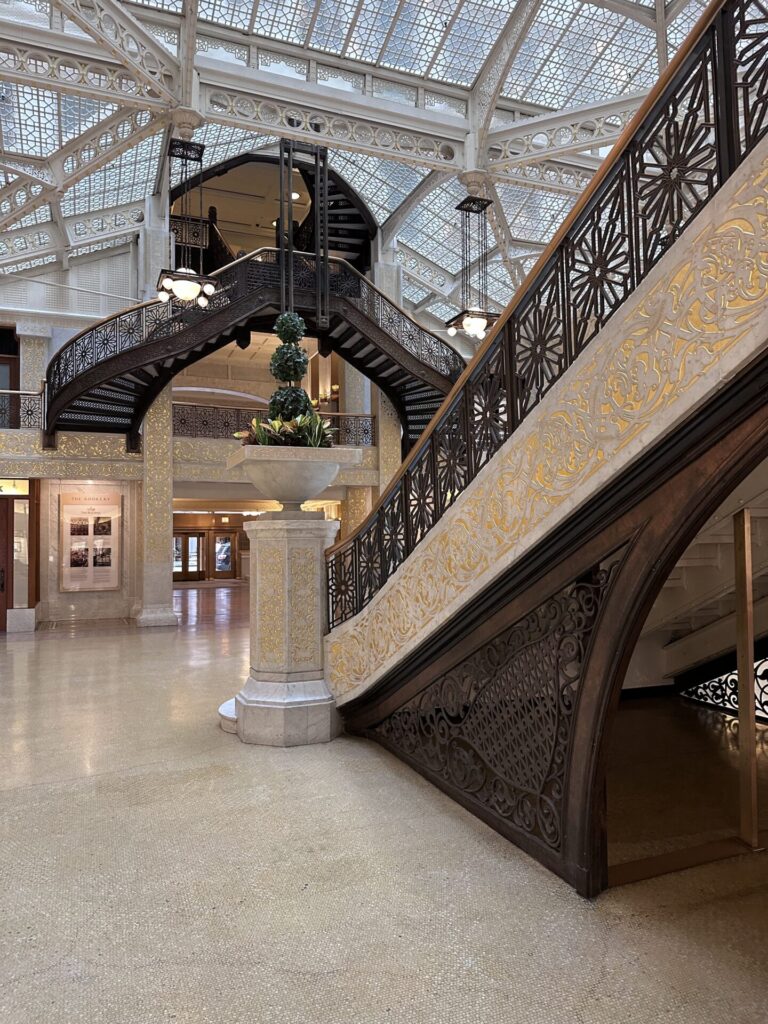
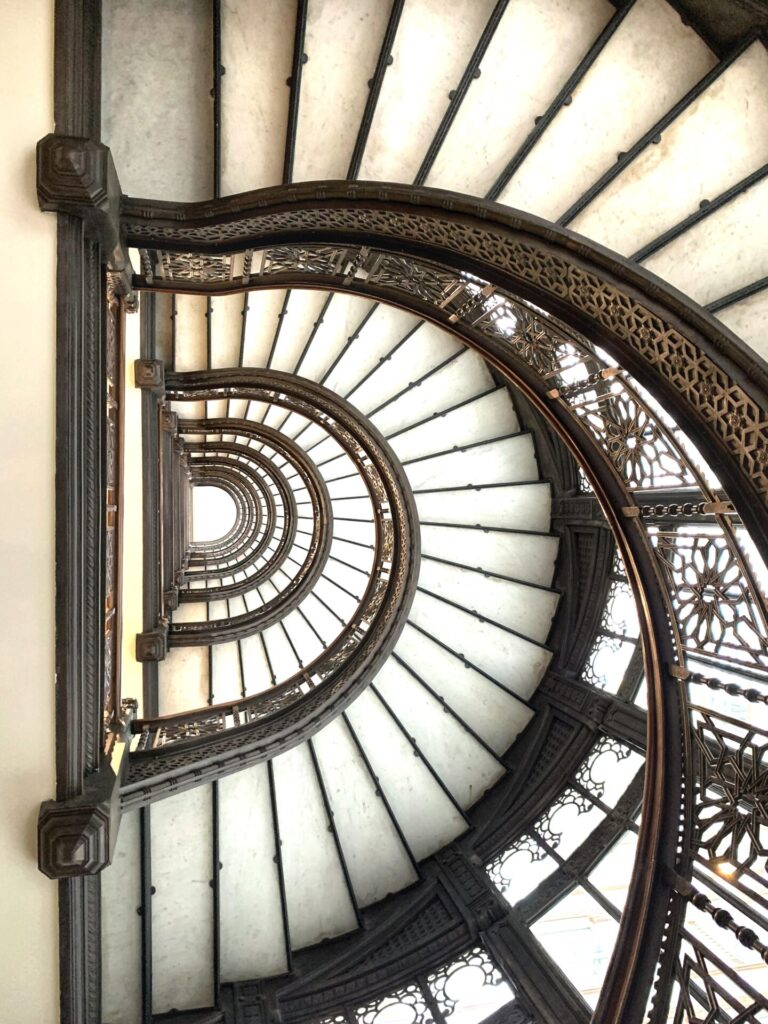
Chicago Board of Trade
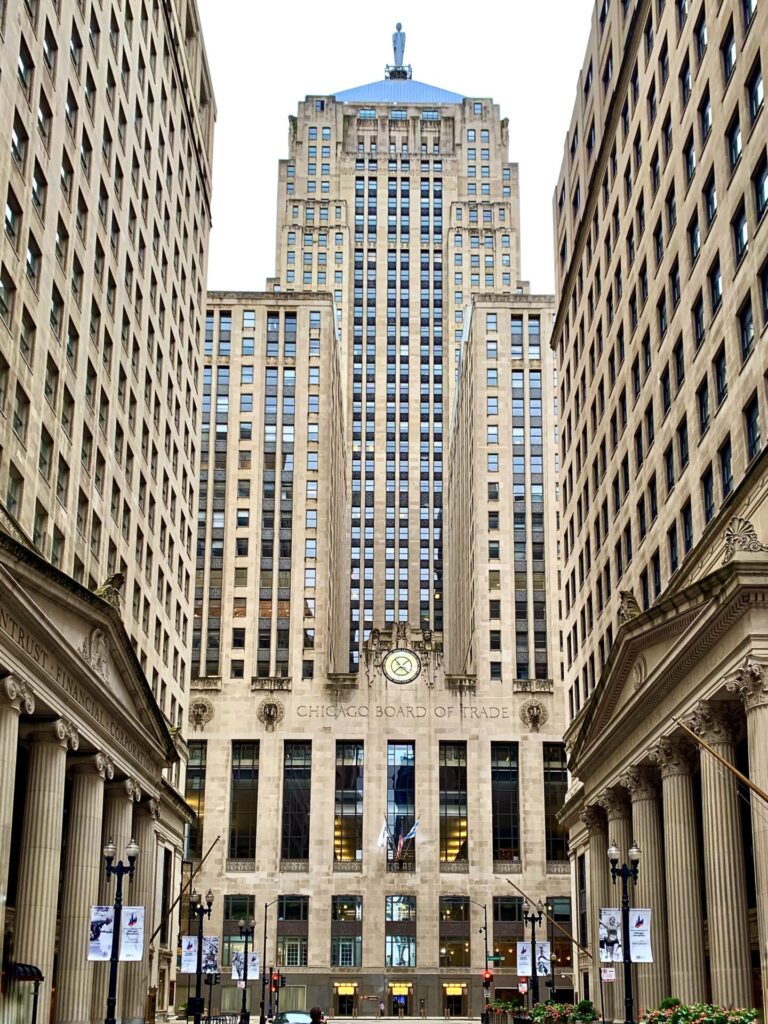
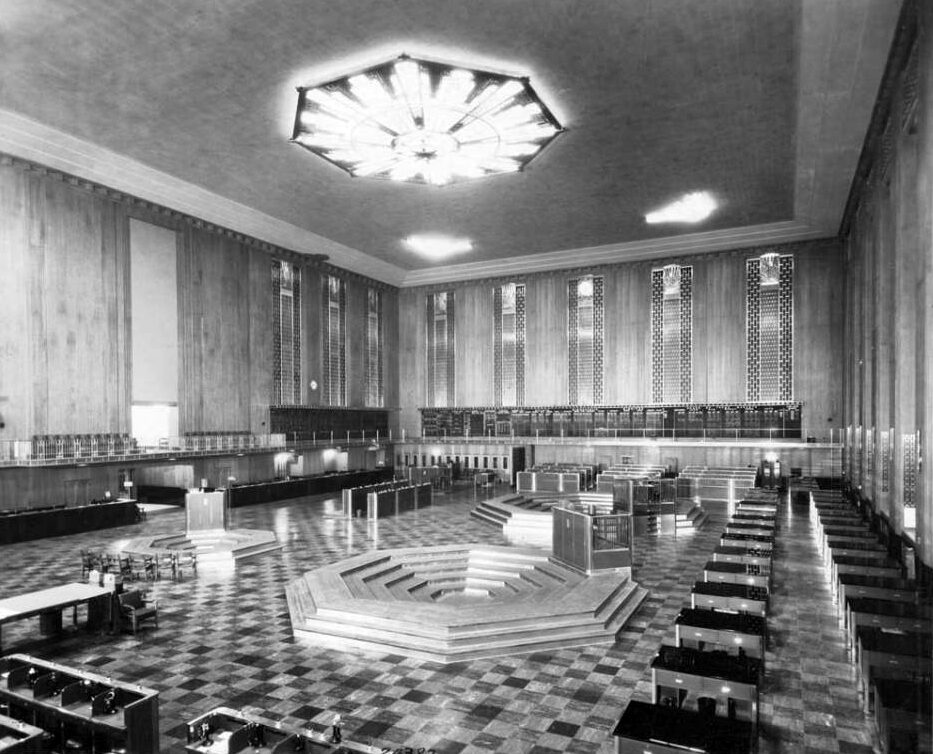

Chicago Board Of Trade
Art Deco
Architect: Holabird & Root
Circa 1930
Clock is flanked by a Mesopotamian Man on the left holding wheat and a Native American on the right holding stalks of corn. Between them is a Deco-styled eagle – the emblem of the nation.

Every time a price changed it would be handwritten in chalk!
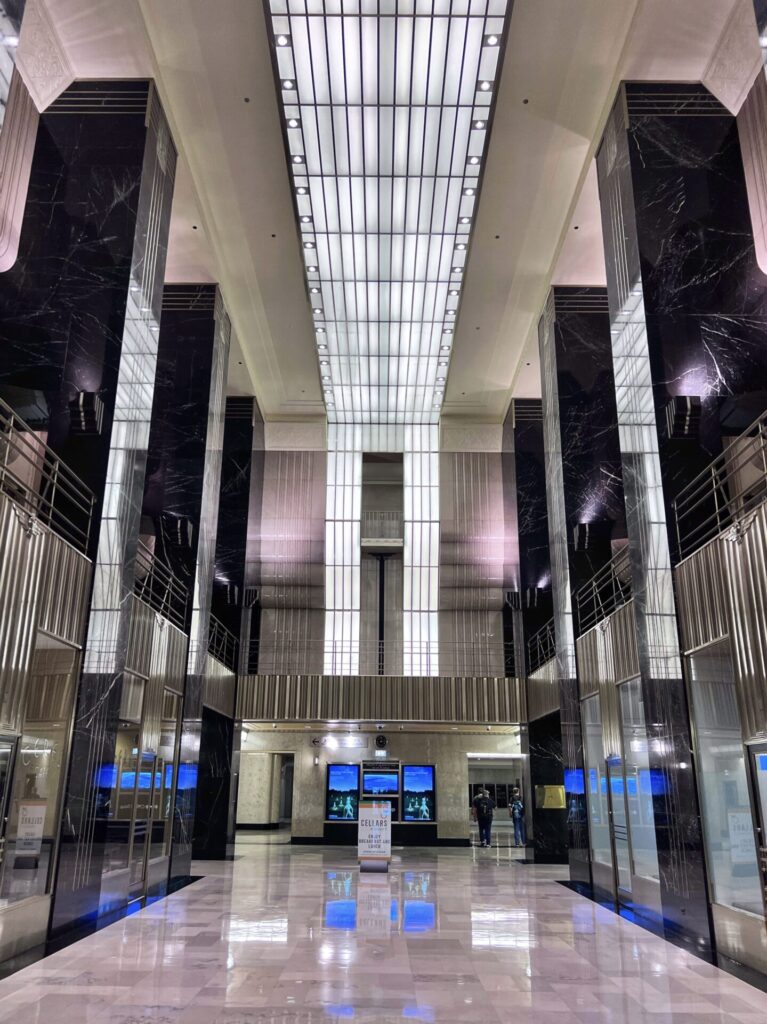

4 U.S. Standard Time Zones Created Here
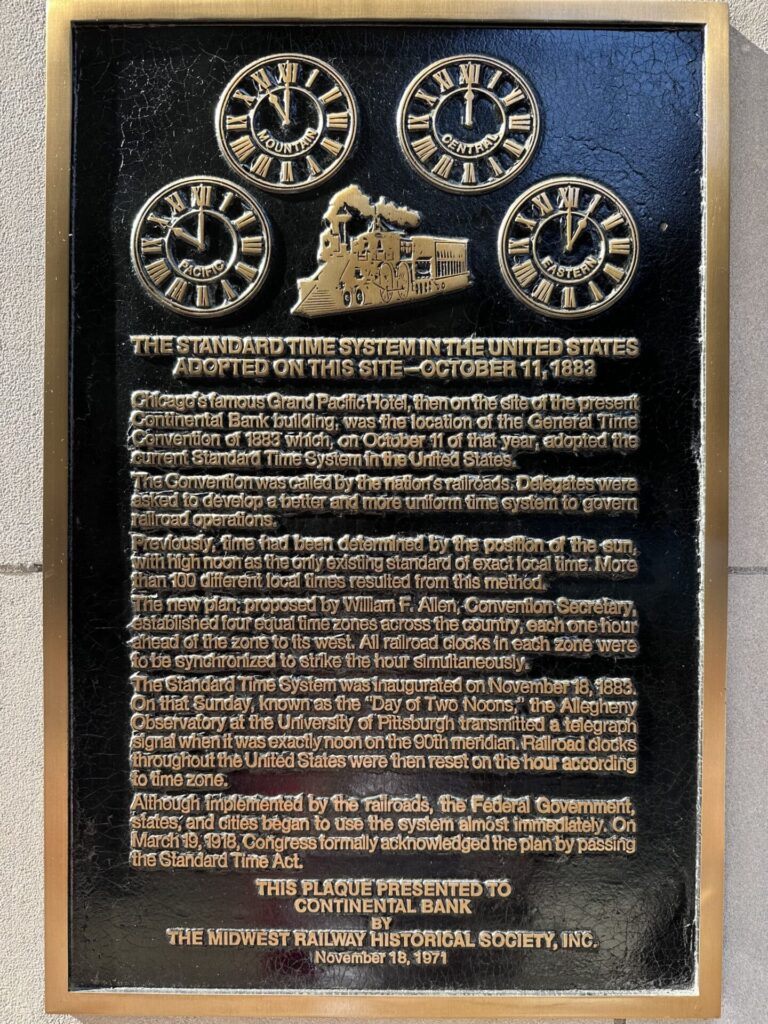
Site of the famous Grand Pacific Hotel’s General Time Convention of 1883. Previous to the creation of the four time zones there were over 100 different zones!
Monadnock Building
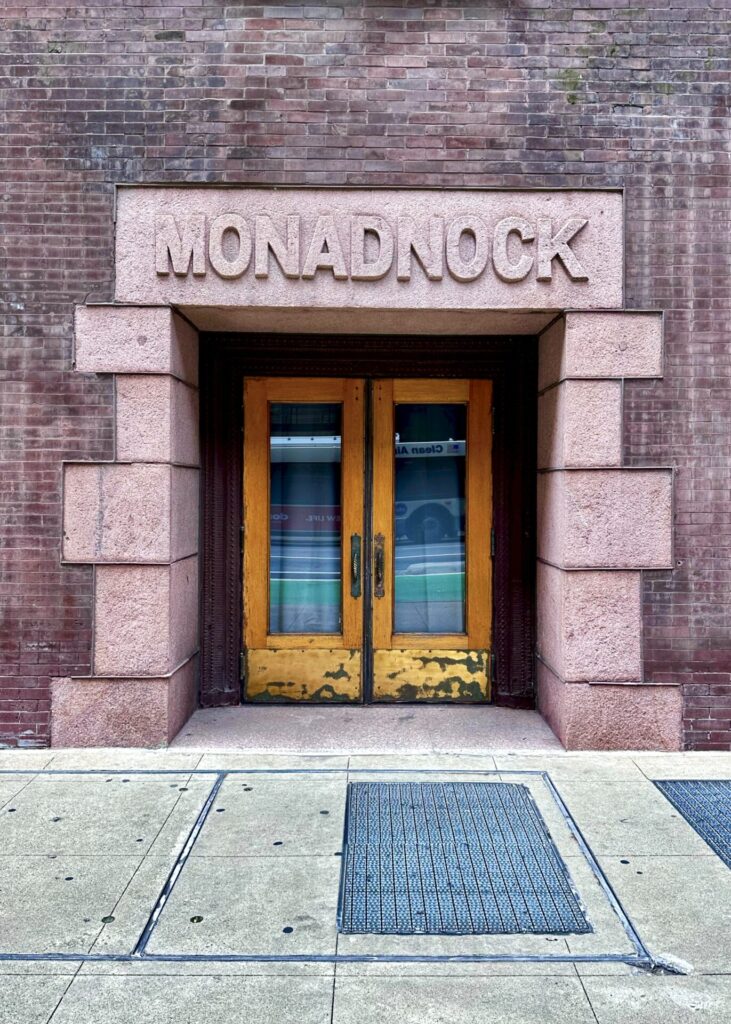
At 215 feet (16 stories) it is still the world’s tallest building with load bearing walls that are 6 feet deep at the base!
Architect: Burnham & Root
Circa: 1893
Flamingo by Alexander Calder

Constructed in 1973 -1974
Surrounding it are the Federal Plaza buildings by Ludwig Mies van der Rohe, director of the Bauhaus in Germany and founder of Chicago’s Second School Of Architecture which was called the International Style who’s motto was “Less Is More”.
Marquette Building

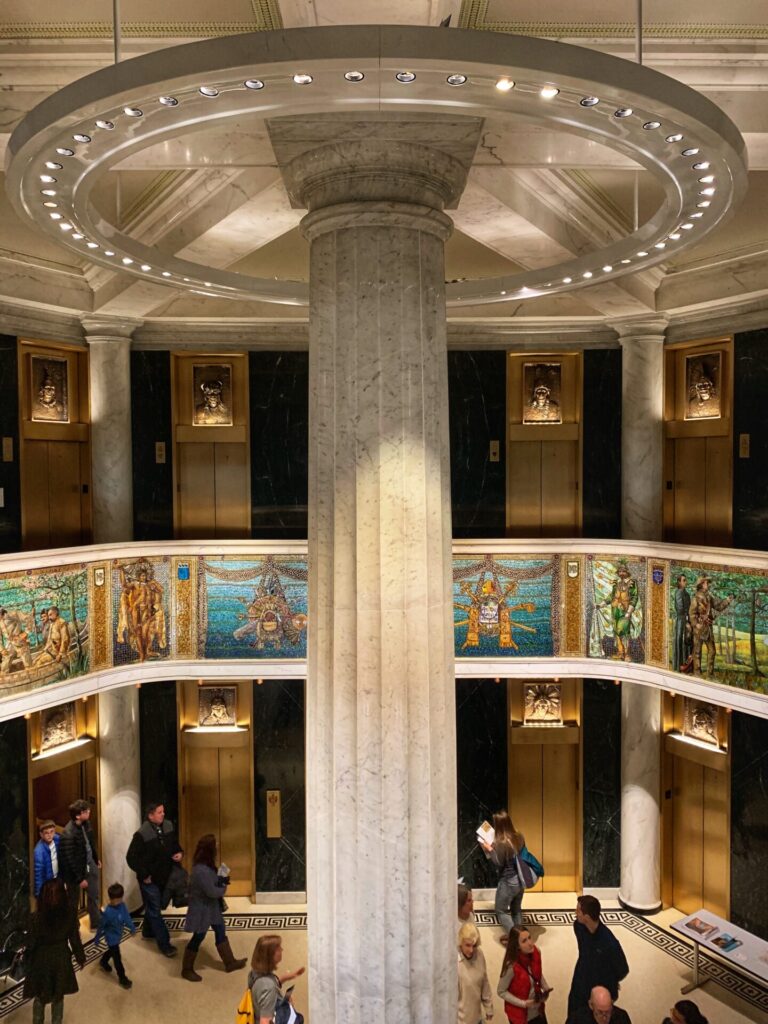
Palmer House Hotel


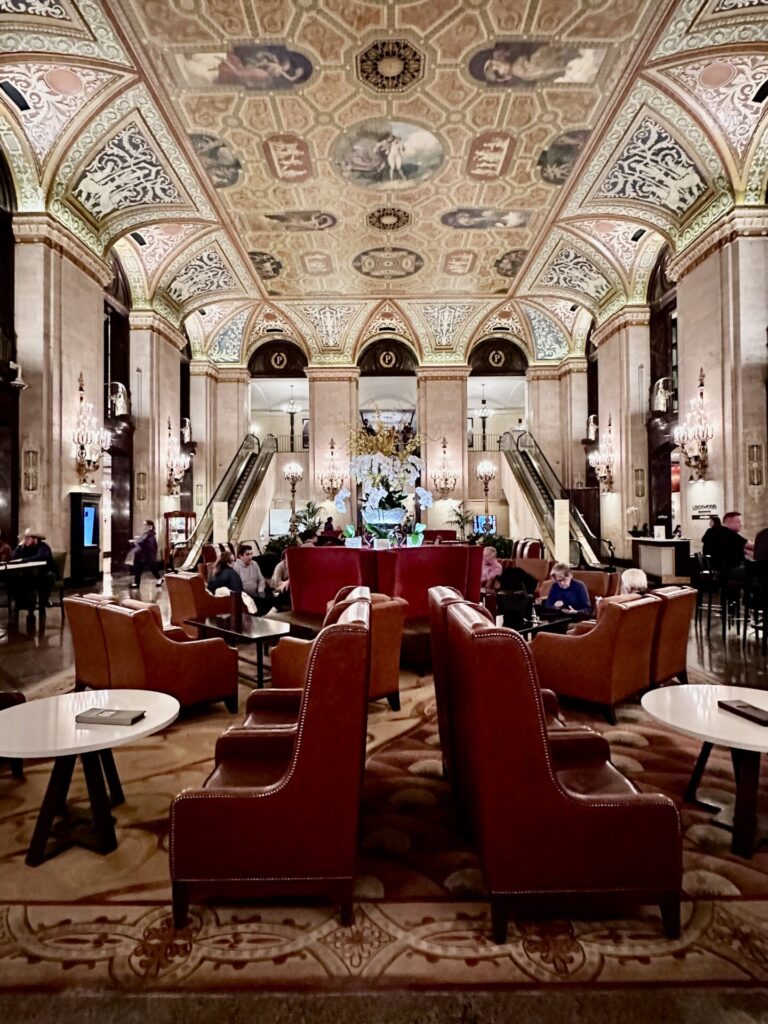
Salvaged Doorway Arch – Stock Exchange Building
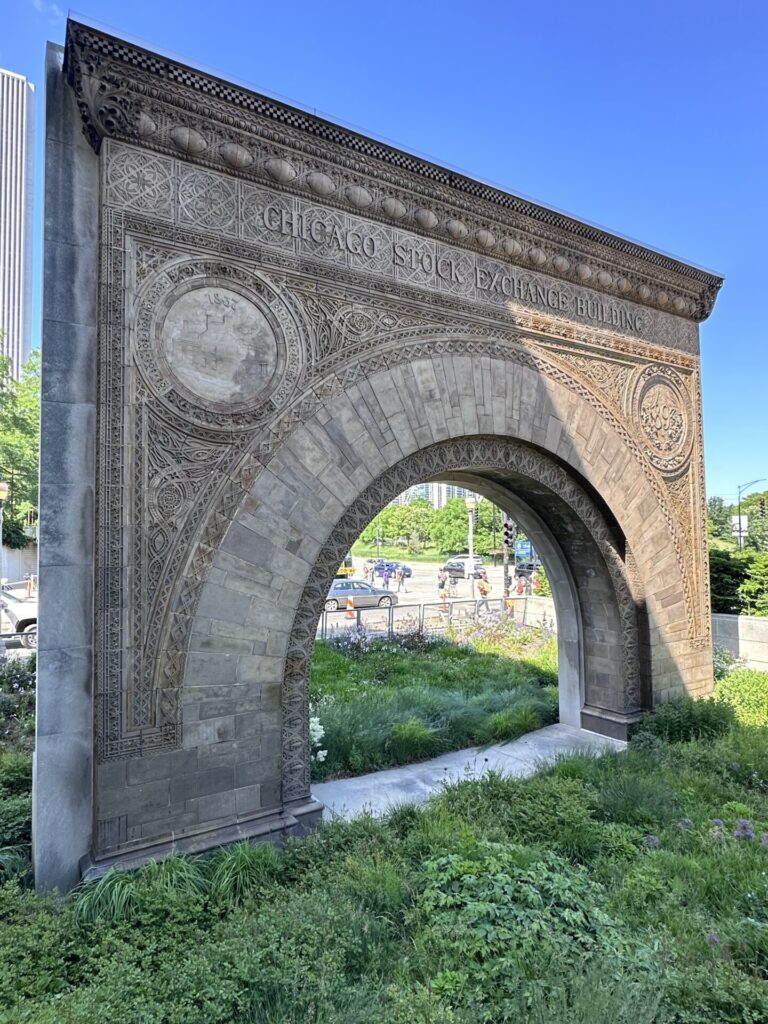
A salvaged archway from the demolished Chicago Stock Exchange Building designed by Louis Sullivan in 1893.
Landmarks
- Grant Park is a large urban park in the Loop community area of Chicago. Located within the city’s central business district, the 319-acre park’s features include Millennium Park, Buckingham Fountain, the Art Institute of Chicago, and the Museum Campus.
- Buckingham Fountain is a Chicago Landmark in the center of Grant Park. Dedicated in 1927 and donated to the city by philanthropist Kate S. Buckingham, it is one of the largest fountains in the world. Built in a rococo wedding cake style and inspired by the Latona Fountain at the Palace Of Versailles
- Fine Arts Building – formerly the Studebaker Carraige Co. Repository and Showroom
- Congress Hotel – Opened by R.H. Southgate just before the 1893 World’s Fair, the hotel has hosted numerous US Presidents and a wide range of political and cultural events. The hotel is frequently claimed to be one of the most haunted buildings in Chicago
- Blackstone Hotel – Over the years, it earned the nickname “The Hotel of Presidents,” having hosted numerous U.S. presidents and dignitaries. Notably, the term “smoke-filled room” originated here during the 1920 Republican National Convention, highlighting its place in political lore.
- Chicago Hilton & Towers – From its opening in 1927 through 2008, every sitting president of the United States had been housed in the hotel before leaving office.

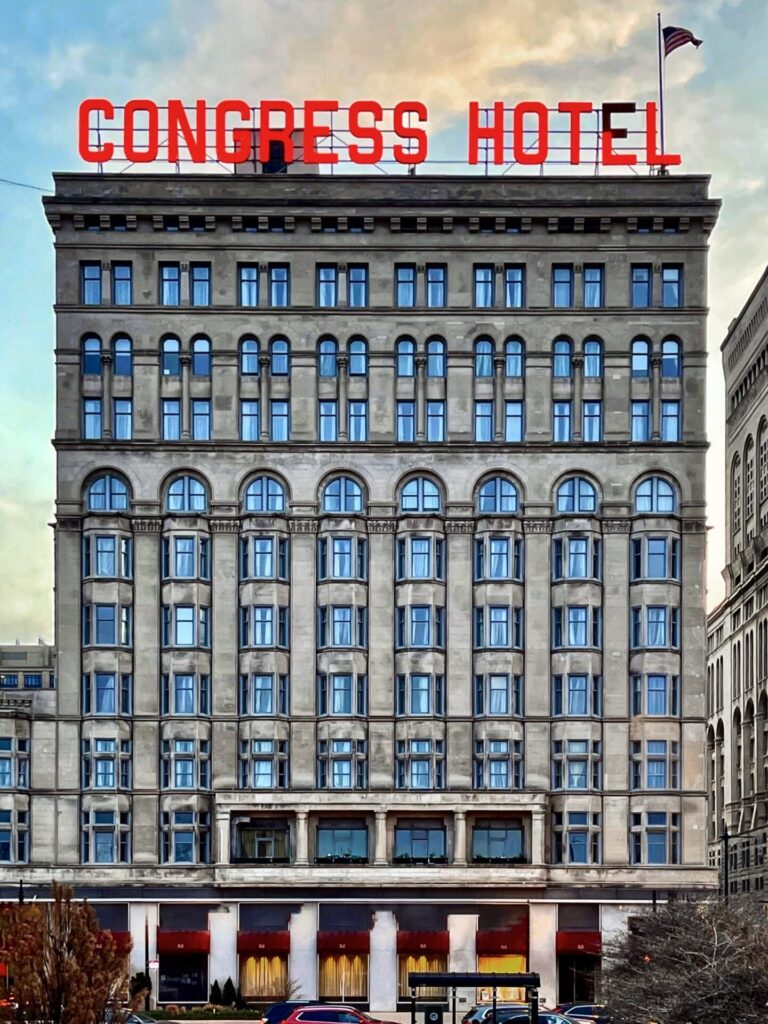
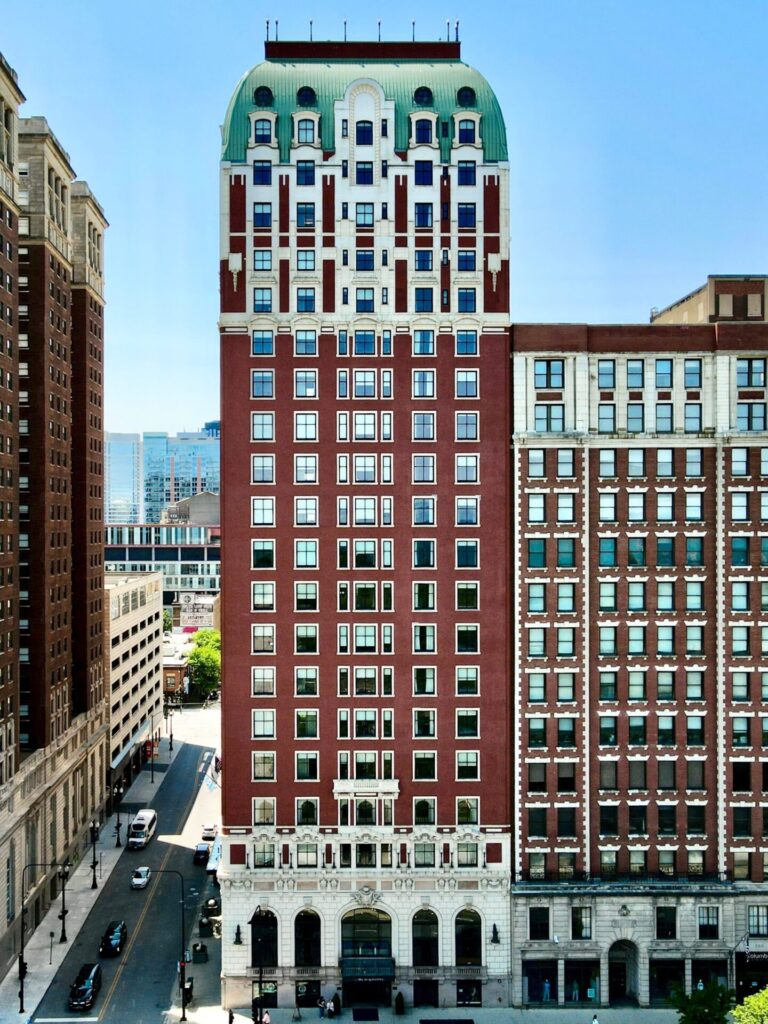
Museum Campus – Stop 1 Off Bus For 15 minutes or so – enjoy the view and get your cameras ready!
- Soldier Field – Home Of The Chicago Bears
- Field Museum Of Natural History – Daniel Burnham & Pierce Anderson – 1921 – one of the largest museums in the world.
- Burnham Harbor – named after Daniel Burnham
- Northerly Island is a 119-acre man made peninsula and recreational park that was the site of the 1925 Century Of Progress World’s Fair and also formerly Meigs Airfield.
- Adler Planeterium – founded in 1930 by Max Adler
- Shedd Aquarium – designed by Graham, Anderson, Probst & White and opened in 1929
- Amazing views of Chicago’s skyline!
Clarke-Ford House – South Prairie Avenue Historic District
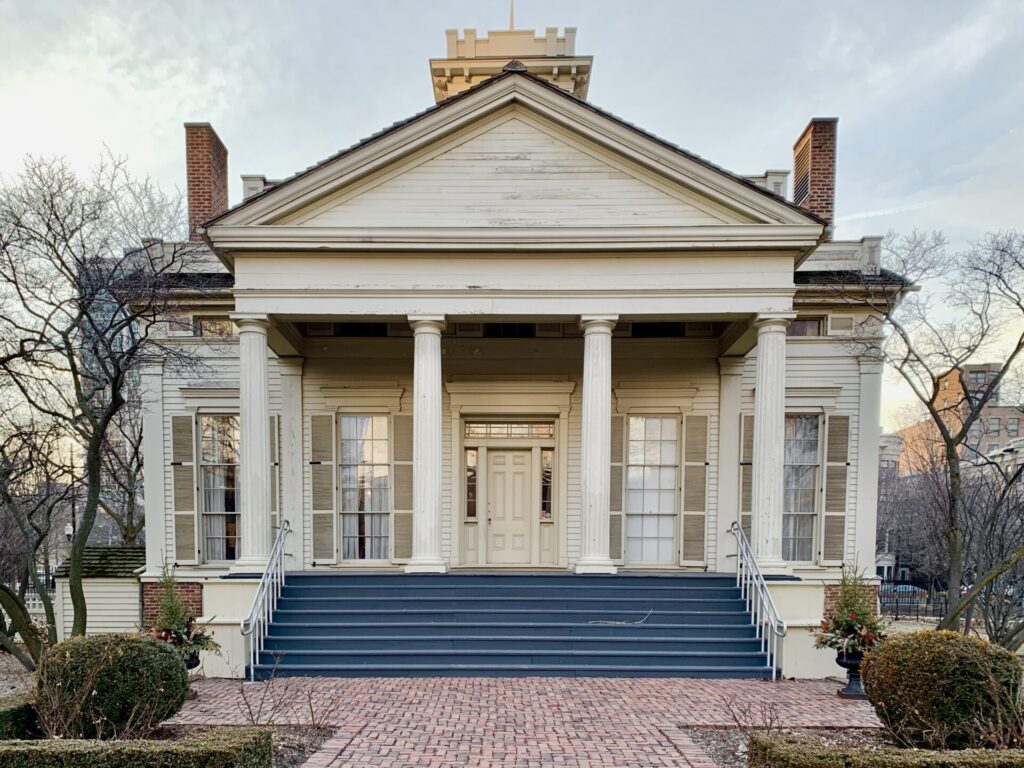


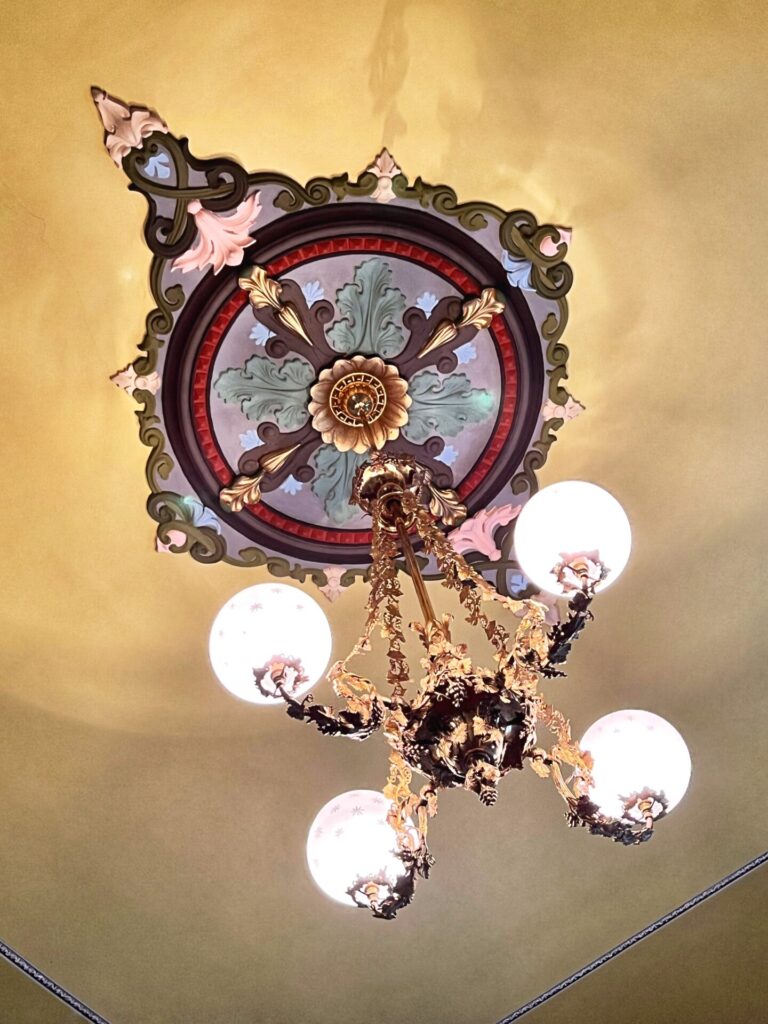

Elbridge G Keith House
This French Second Empire style house was built in 1870-1871 for Keith, one of three Keith brothers to reside on Prairie Avenue. Keith was born on July 16, 1840 in Barre, Vermont, and was named in honor of Elbridge Gerry, who served as vice-president under President James Madison.
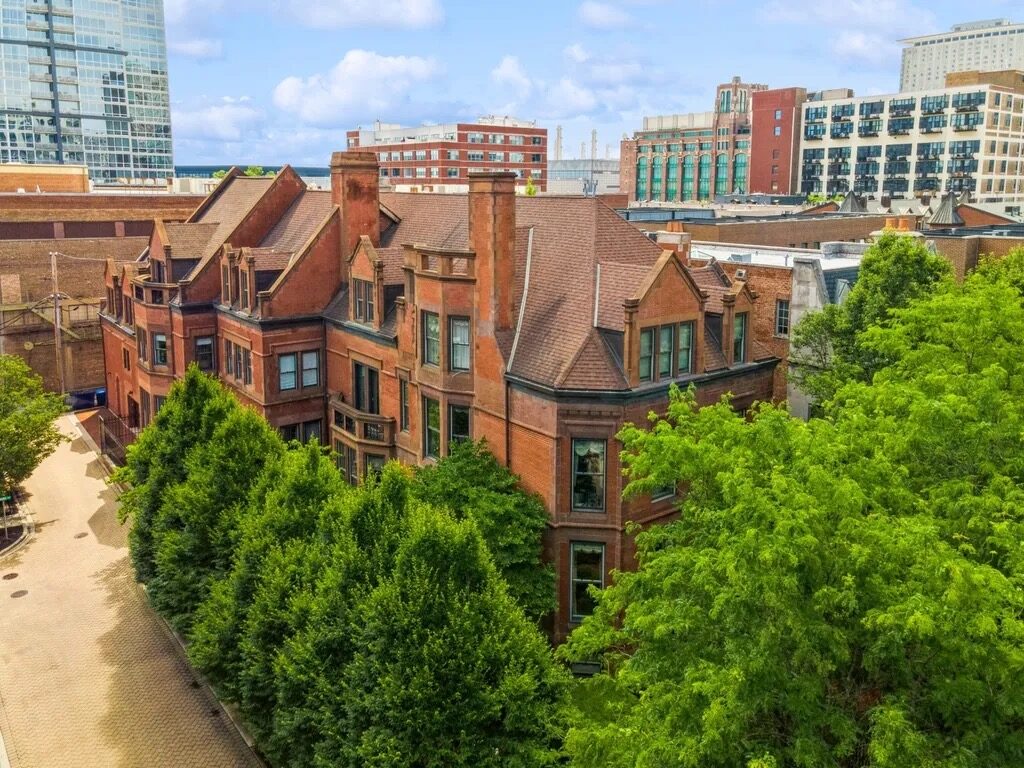
Marshall Field Jr. House

George Pullman’s French Second Empire Home on S. Prairie Avenue (demolished)
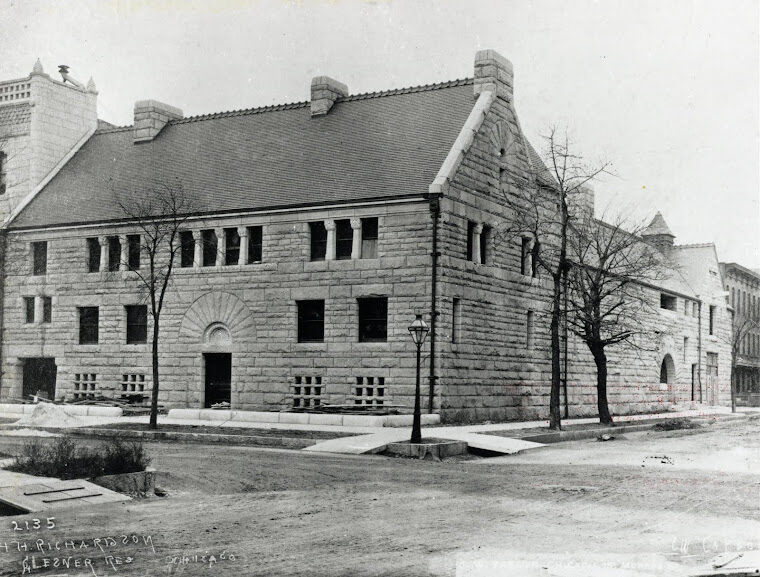
John J. Glessner House
Built in 1887 designed by Henry Hobson Richardson in the Richardsonian Romanesque Style

George Pullman hated the Glessner House so much that he talked his friend into building this mansion so he would not have to look at it!
William Kimball Mansion on S. Prairie Ave. (Kimball Pianos)
Landmarks
- Green Line Cermack/McCormick Place – unusual tunnel-like design
- Hilliard Towers Apartments by Bertrand Goldberg – architect of Marina City (Corn Cobs)

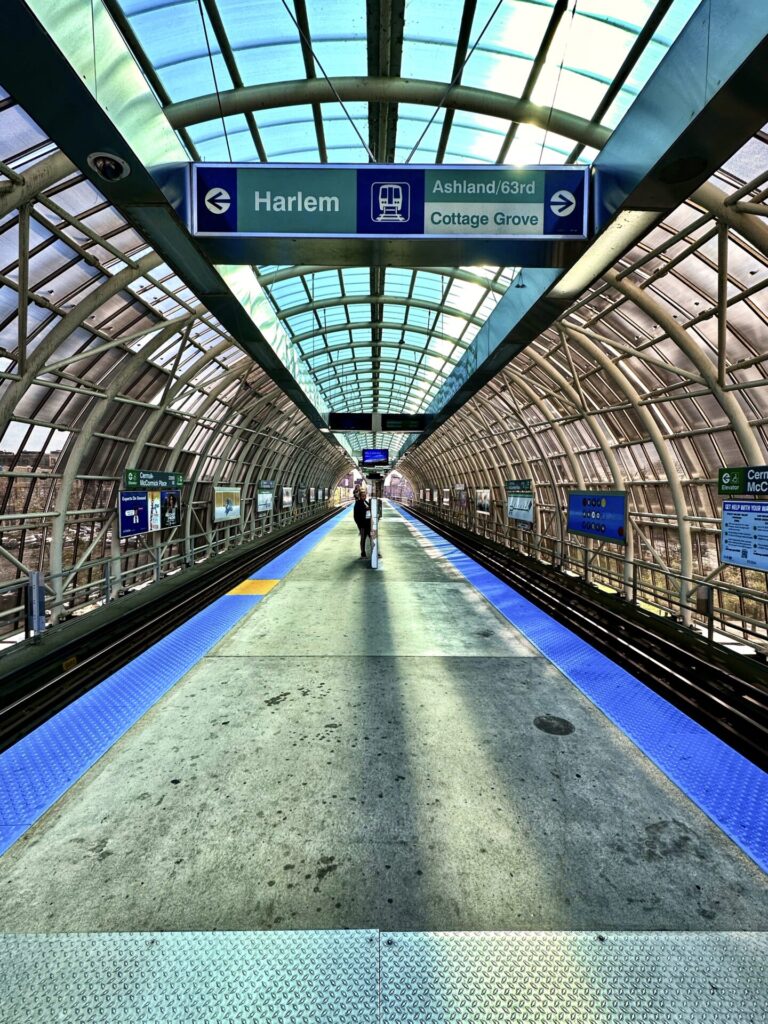
Chinatown
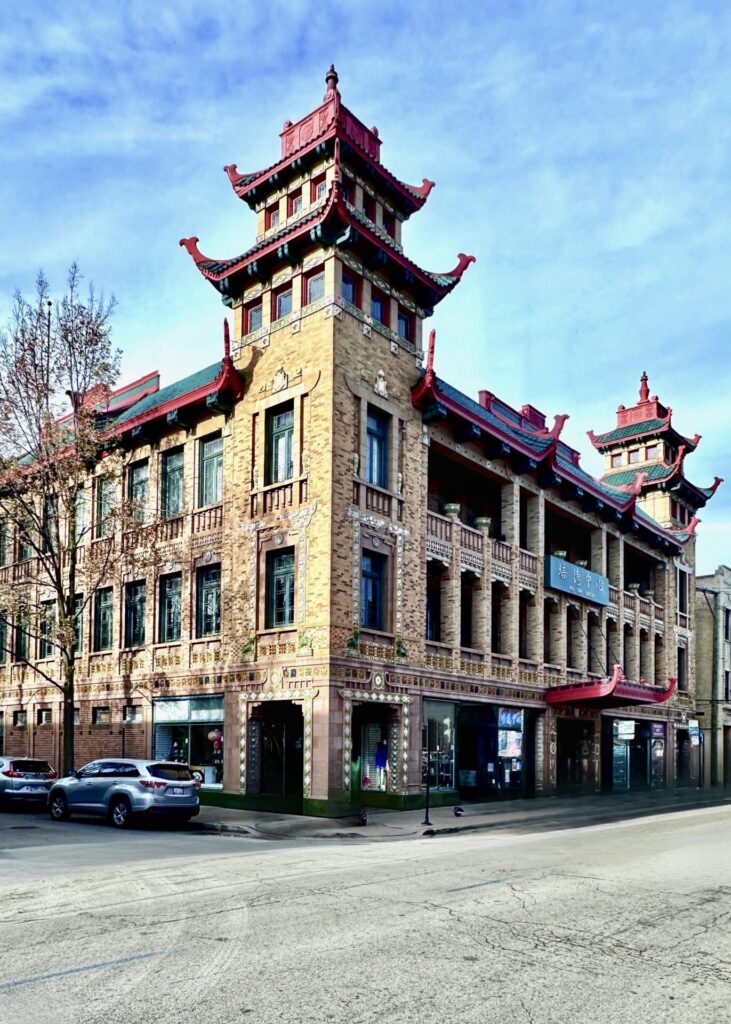
Pui Tak Center: This iconic landmark with its pagoda-style roof and ornate design welcomes you to the heart of Chinatown. Originally built in 1928, it’s a symbol of community and tradition.

Stunning Doorway of the Pui TaK Center with intricate terra cotta carvings. Note the foo dogs at the top.
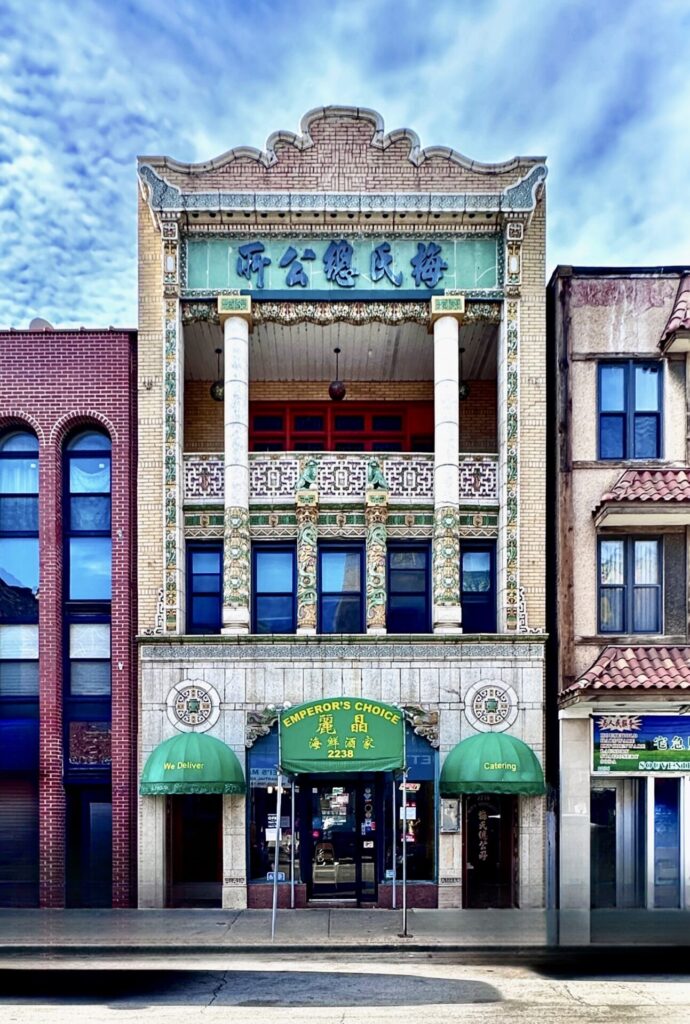

Landmarks
- River City – by Bertrand Goldberg – architect of Marina City (Corn Cobs)
- Willis Tower – Formerly Sears Tower – designed by Skidmore, Owings and Merrill – opened in 1973 and was the world’s tallest building for 25 year! – Now ranked at the 26th tallest.
- Mrs. O’Leary’s barn – site of the start of the Great Chicago Fire of 1871
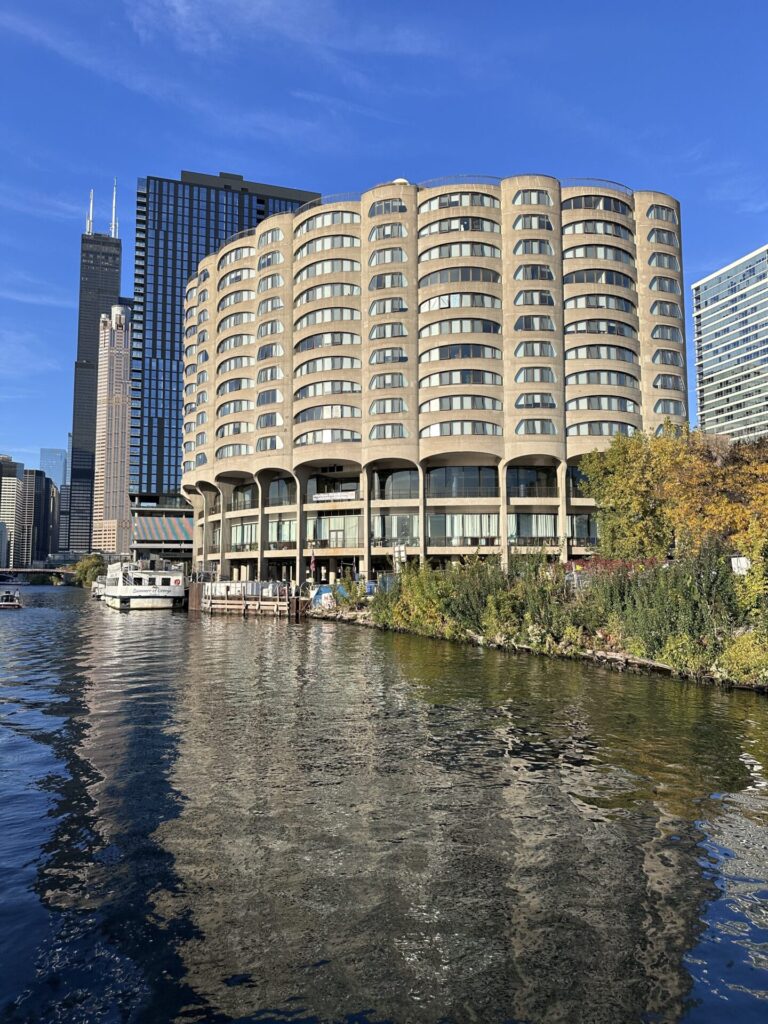
Auditorium Theatre and Fine Arts Building
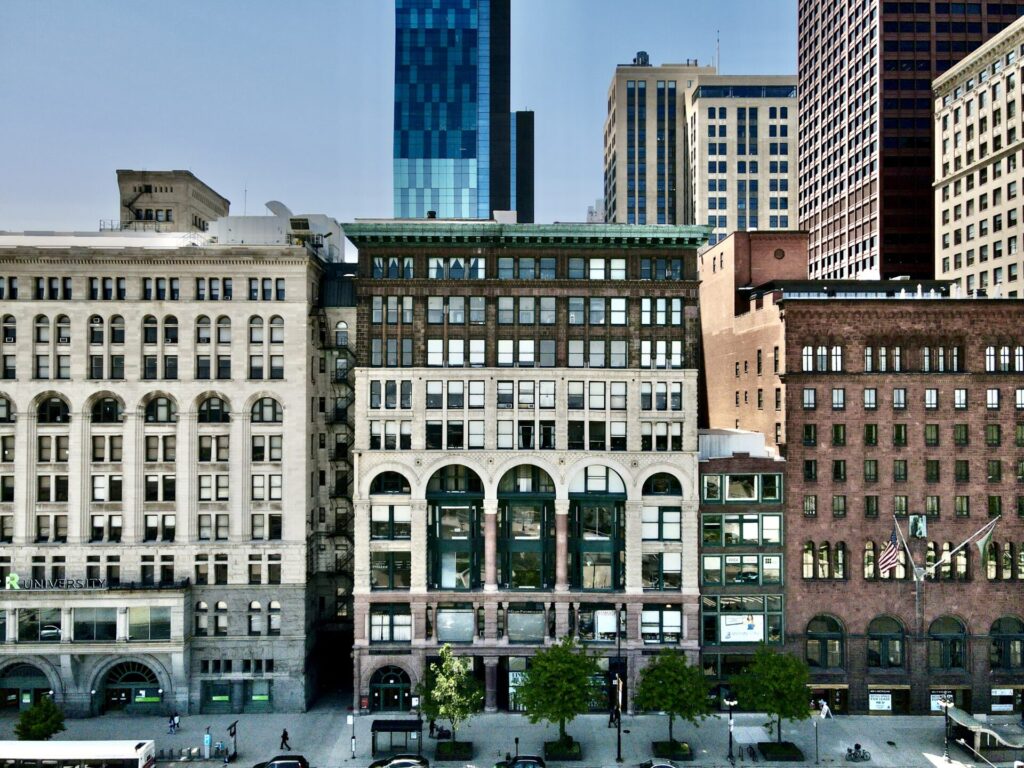
Left: Auditorium Theatre
Designed by Louis Sullivan in 1889
Middle: Fine Arts Building
Designed by Solon Beman in 1885
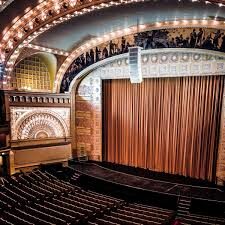
Auditorium Theatre Interior
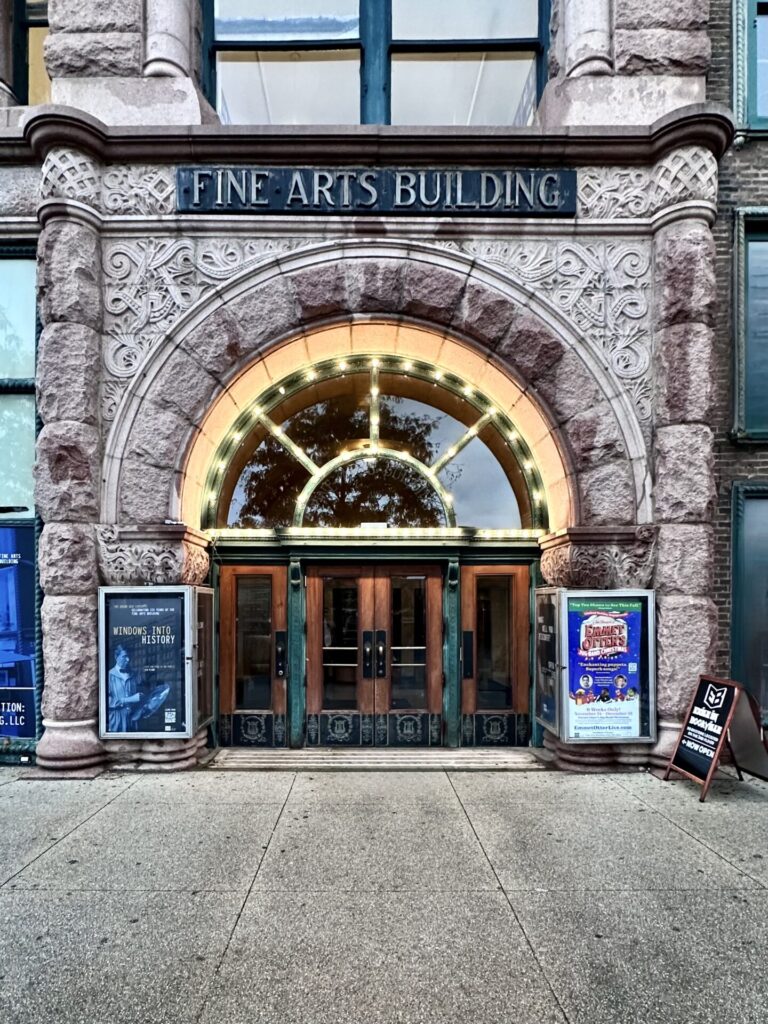
Designed as a vertical assembly line manufacturing building and showroom for Studebaker Carriage Company in 1885.
When they moved in 1897 they spent $500K and converted it into the Fine Arts Building, which opened in 1898 and is still the same today!
Many famous people had studios here including Frank Lloyd Wright, Lorado Taft (sculptor), J.C. & Frank Leyedecker (illustrators), William Denslow (illustrated The Wonderful Wizard Of Oz) and Ralph Fletcher Seymour (etching artist and publisher).

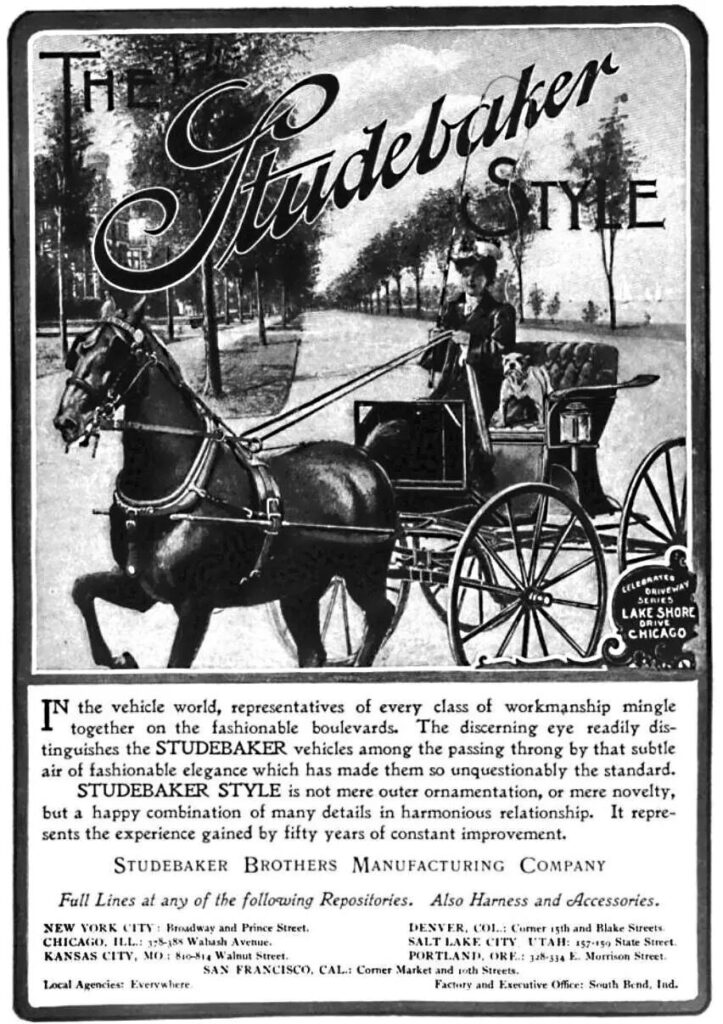
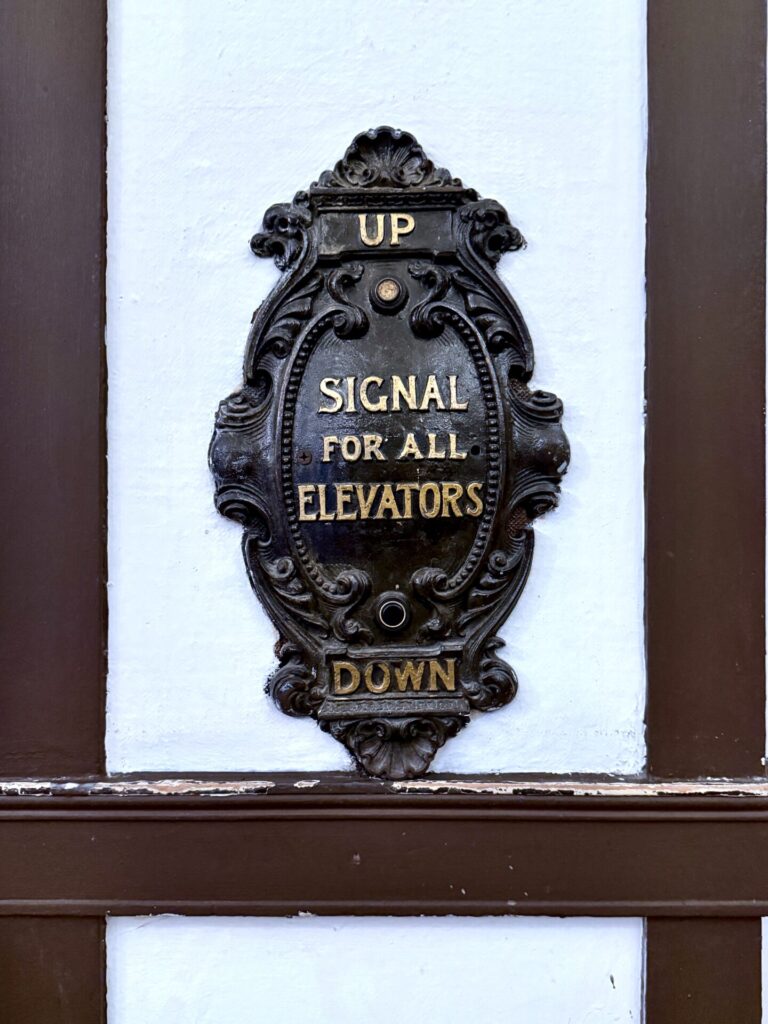
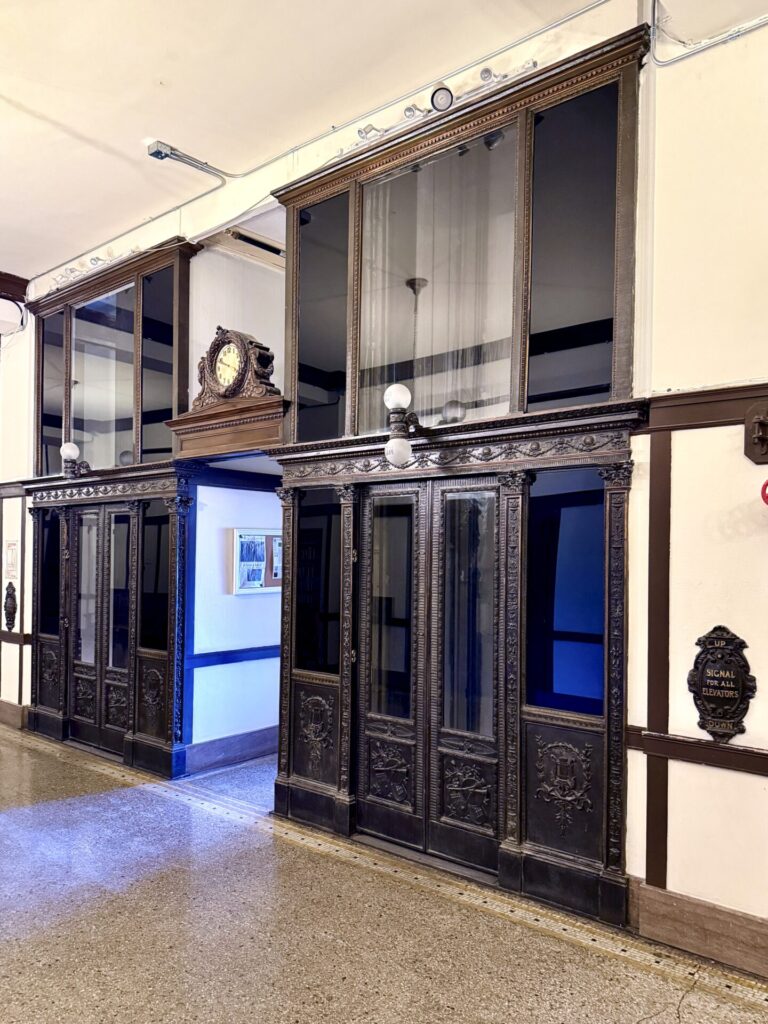
Beginning Of Historic Route 66
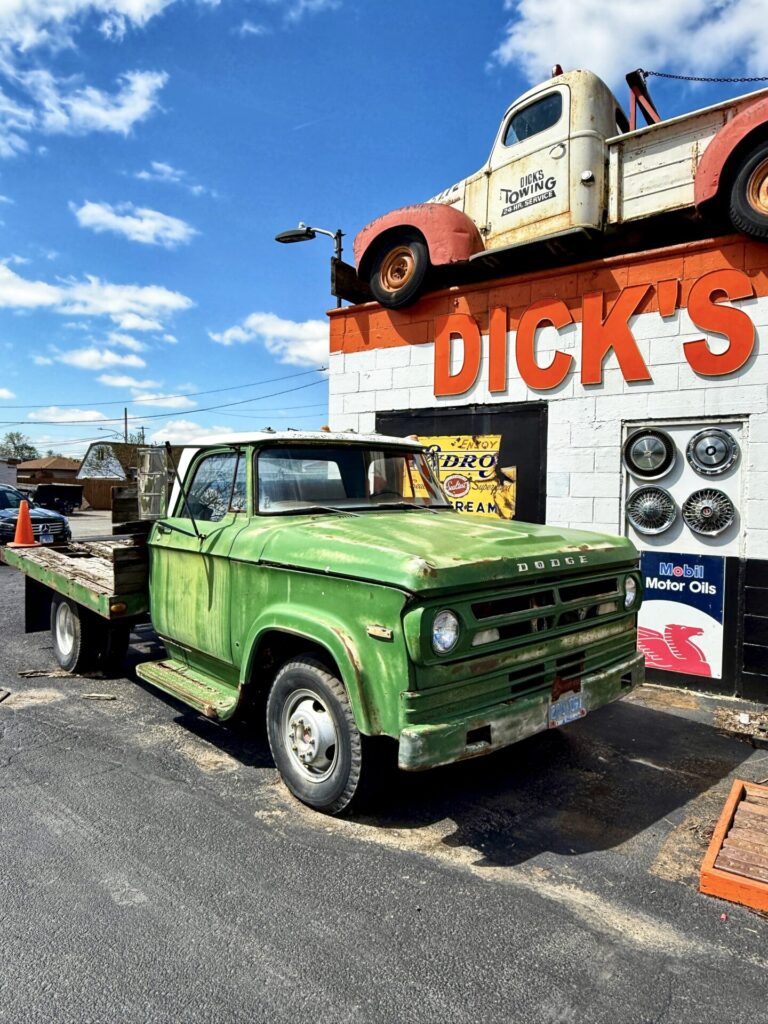
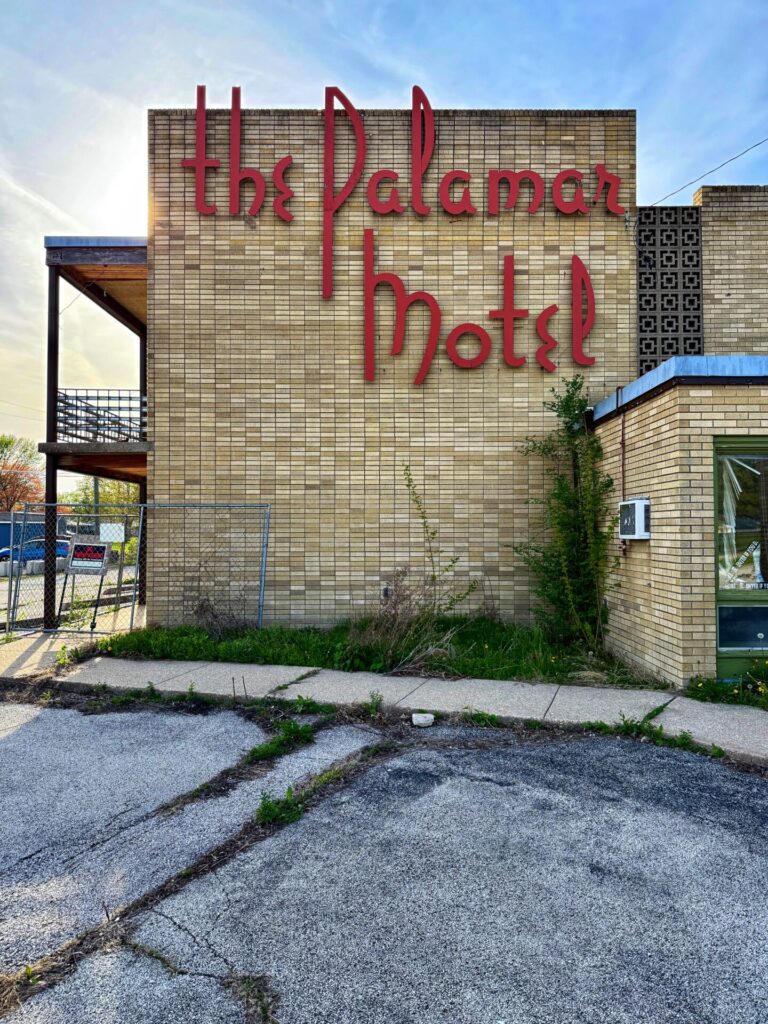
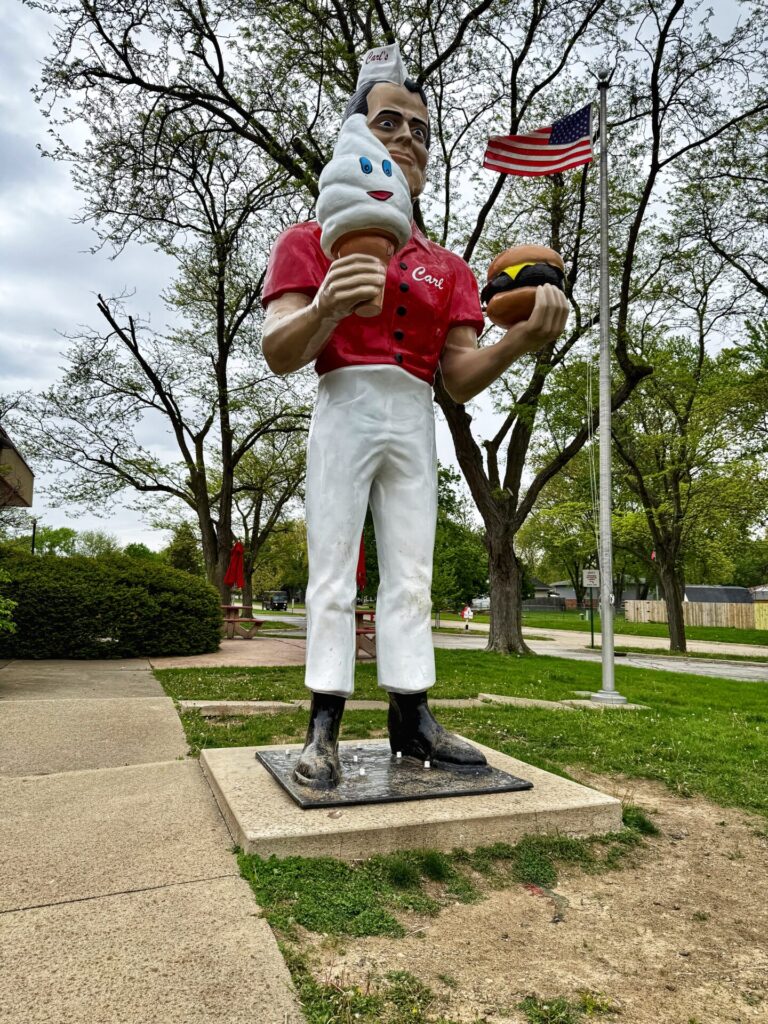
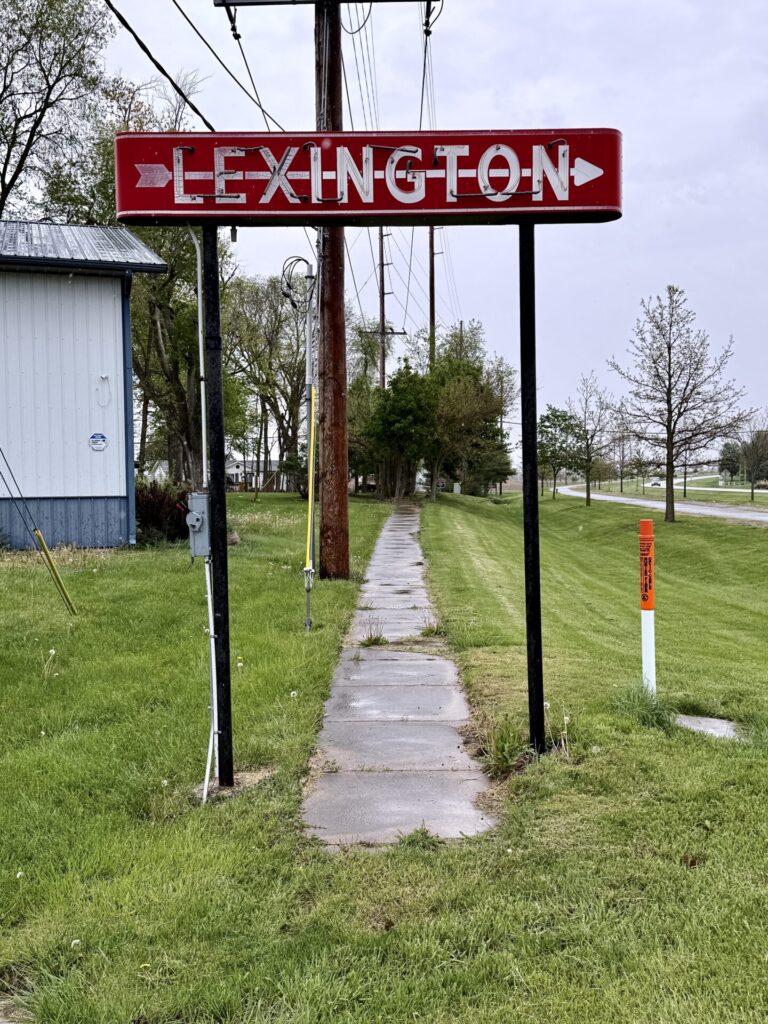
Art Institute Of Chicago
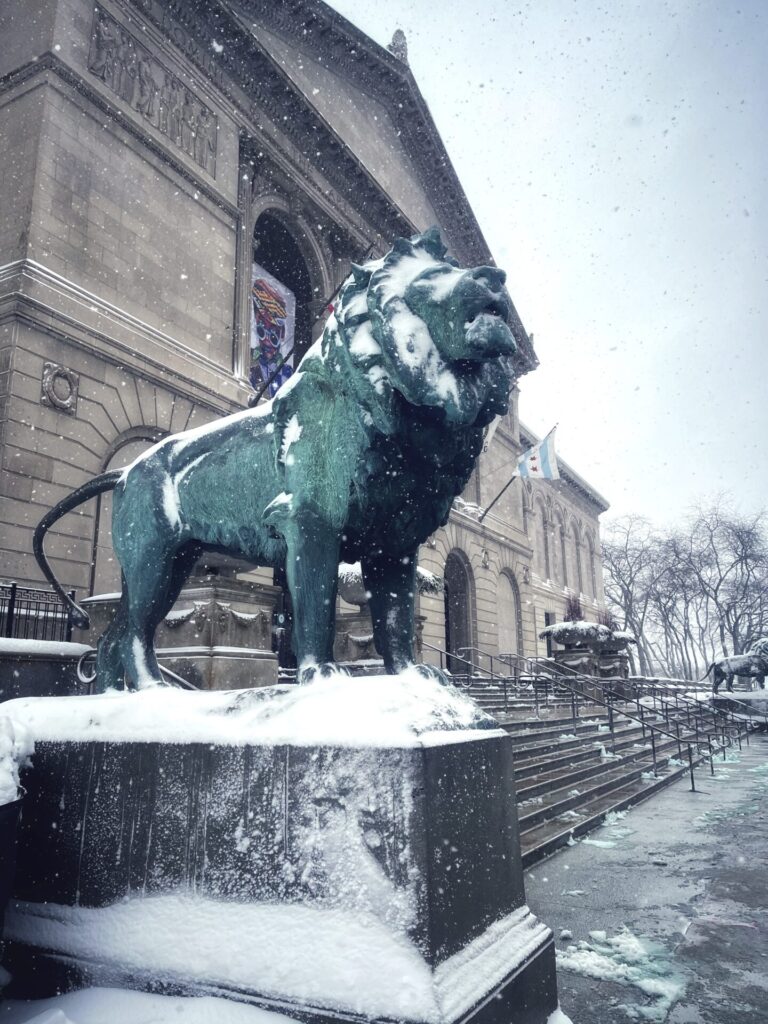
- Built in 1893 for the World’s Fair
- One of the oldest and largest art museums in the world
- Now, along with the Modern Wing the museum has over 1 million square feet!
- Architect: John Wellborn Root (Burnham & Root)
Millennium Park – Stop 2 Off Bus (Restrooms are located in the McCormick Tribune plaza (below The Bean) and also the area below the Pritzker Pavillion)
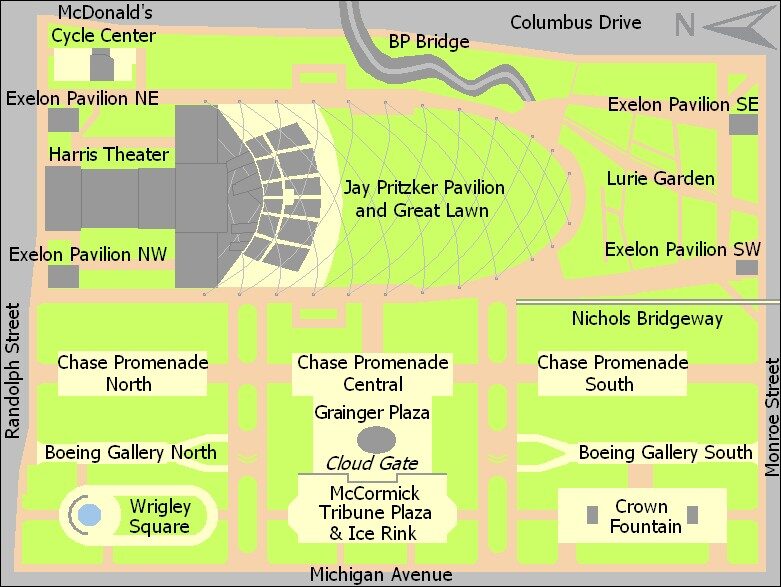
Millennium Monument – Wrigley Square
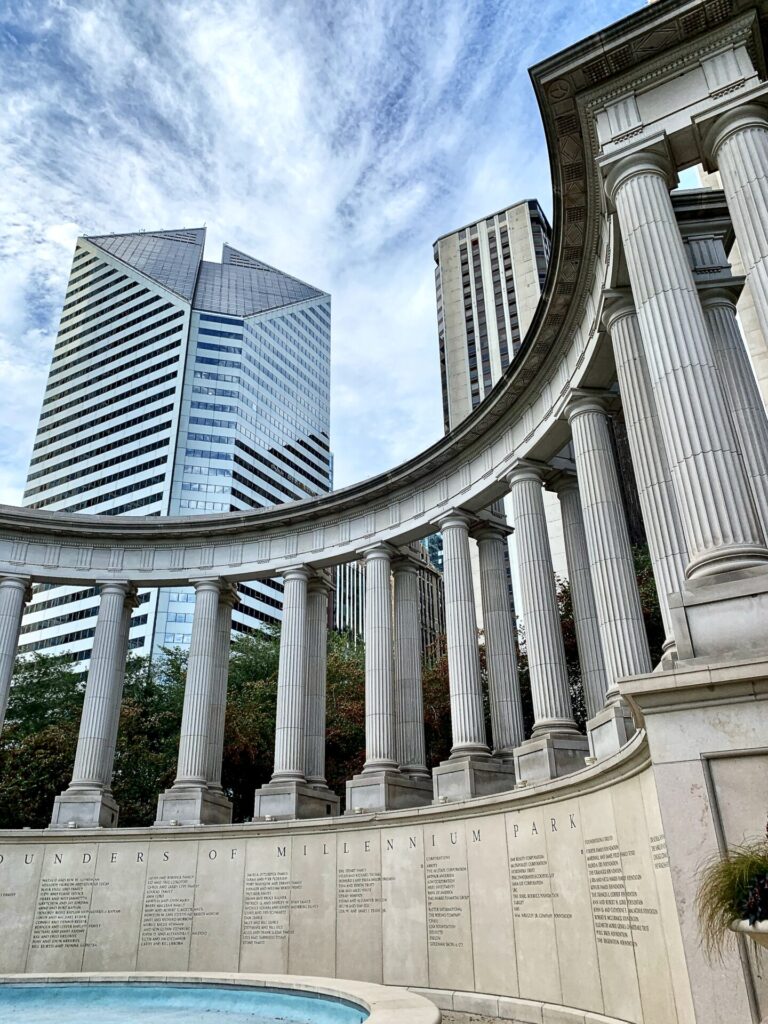
– Designed by architectural firm OWP/P (Orcutt Winslow)
– Replica of 1917 Doric-style peristyle that stood in Grant Park until 1953
– Celebrates the founders of Millennium Park
Cloud Gate (The Bean)
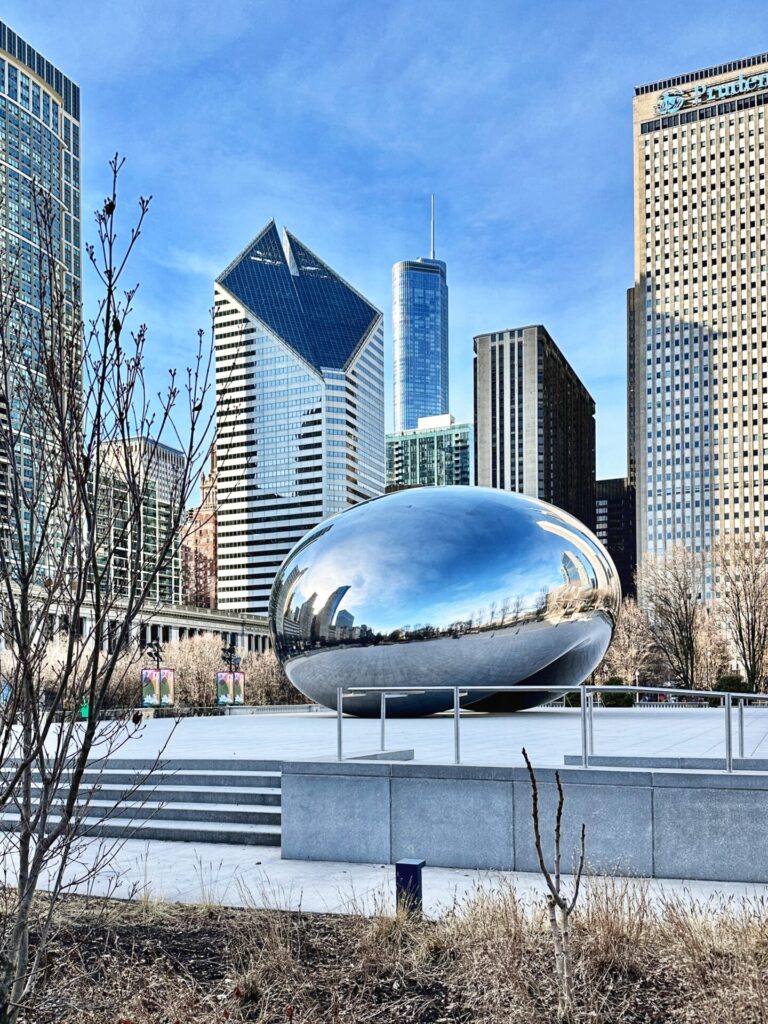
– Artist: Anish Kapoor (British artist)
– Kapoor’s first work in the USA
– 100 tons of polished stainless steel
– One of the world’s largest outdoor sculptures
– Considered the most photographed sculpture in the world
Crown Fountain

– Artist: Jaume Plensa
– Made from black granite and glass brick
– 50 feet tall with changing faces of Chicago residents
– Inspired by gargoyle-faces ‘spit’ water
– Reflecting pool between the towers
Lurie Garden
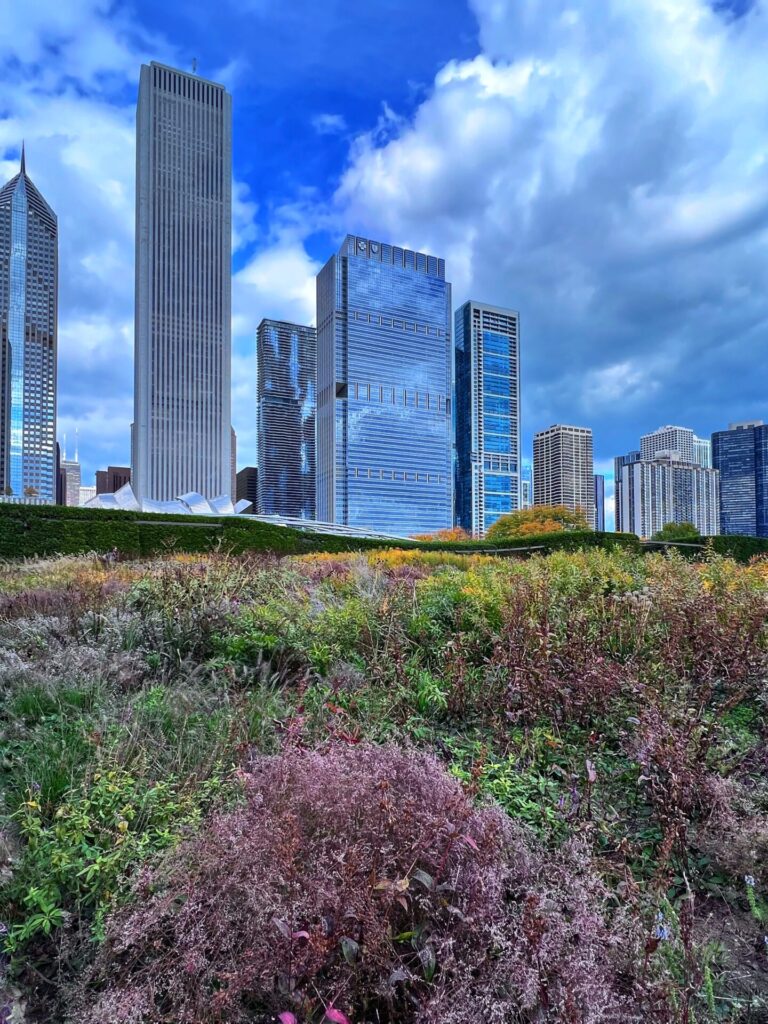
– Pays homage to Chicago’s motto: “Urbs in Horto” (City in a Garden)
– Represents Chicago’s marshland origins
– Combines wild natural planting with structured design
Jay Pritzker Pavilion
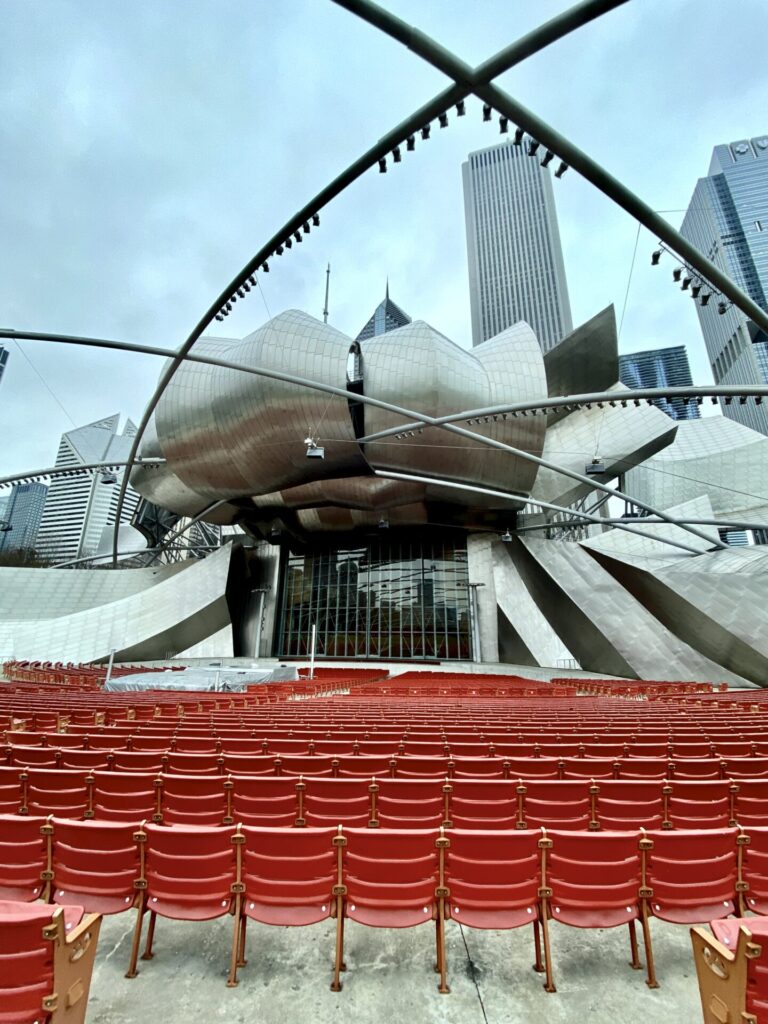
– Architect: Frank Gehry
– Billowing curves of stainless steel
– Most sophisticated outdoor concert venue in the U.S.
– Trellis above holds distributed speaker system
NOTE: Meet back at the bus by the announced time please.
North Avenue Beach – Summer of 2020!

Oldtown History – Harold Hansen Mansion
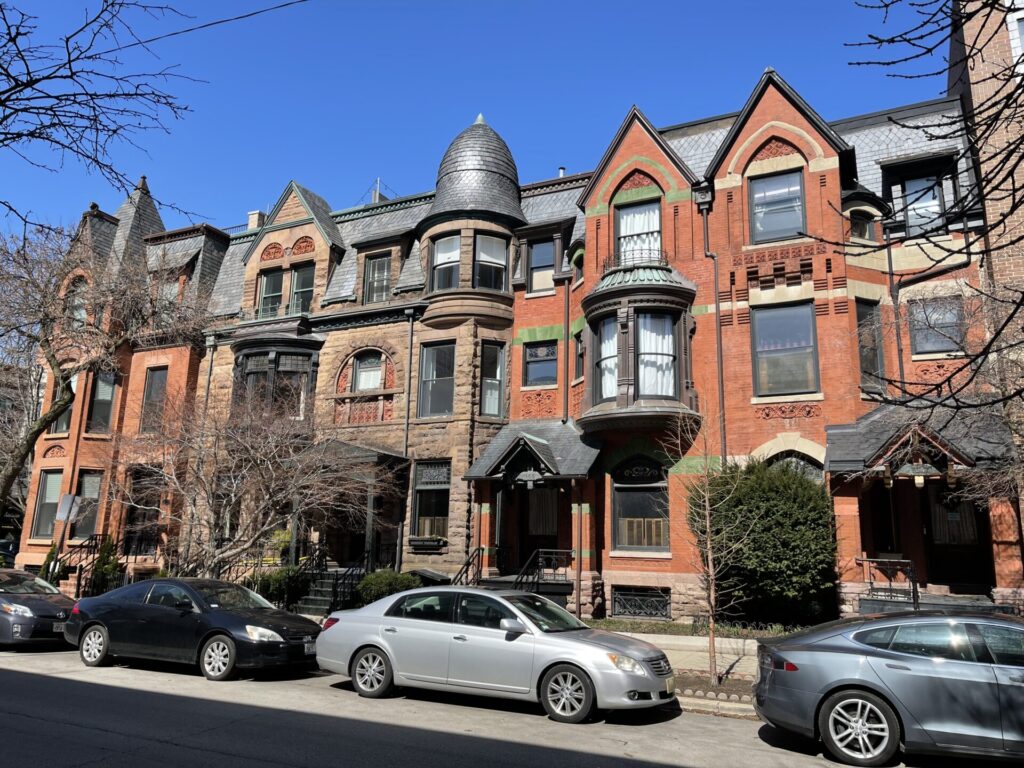



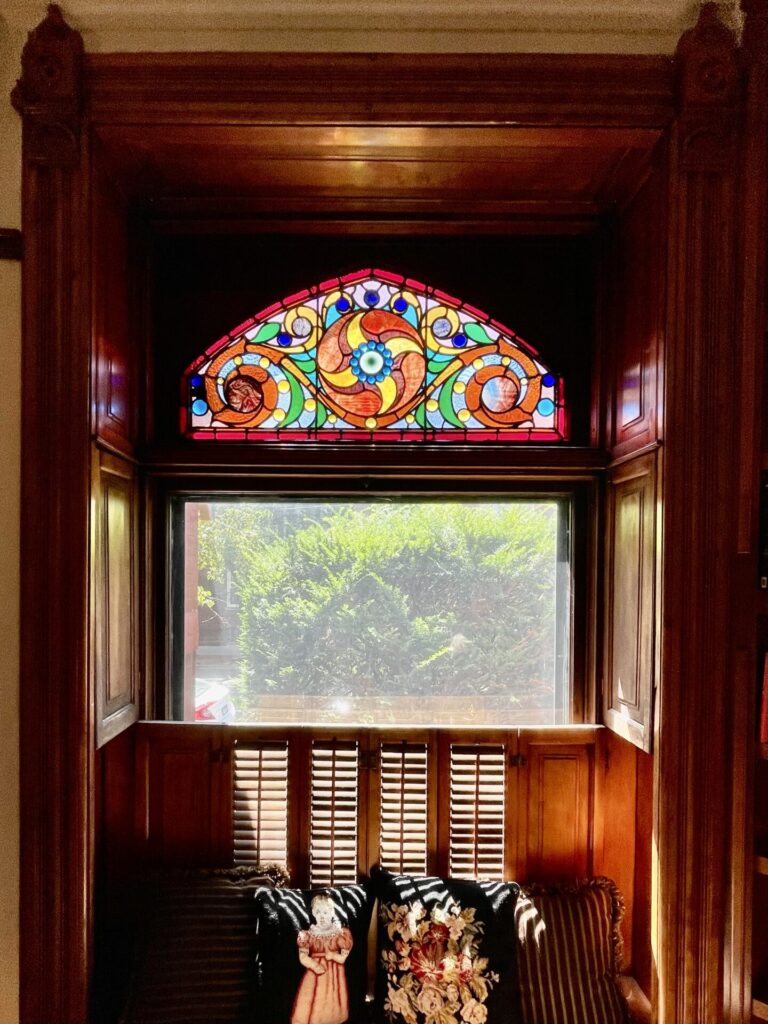
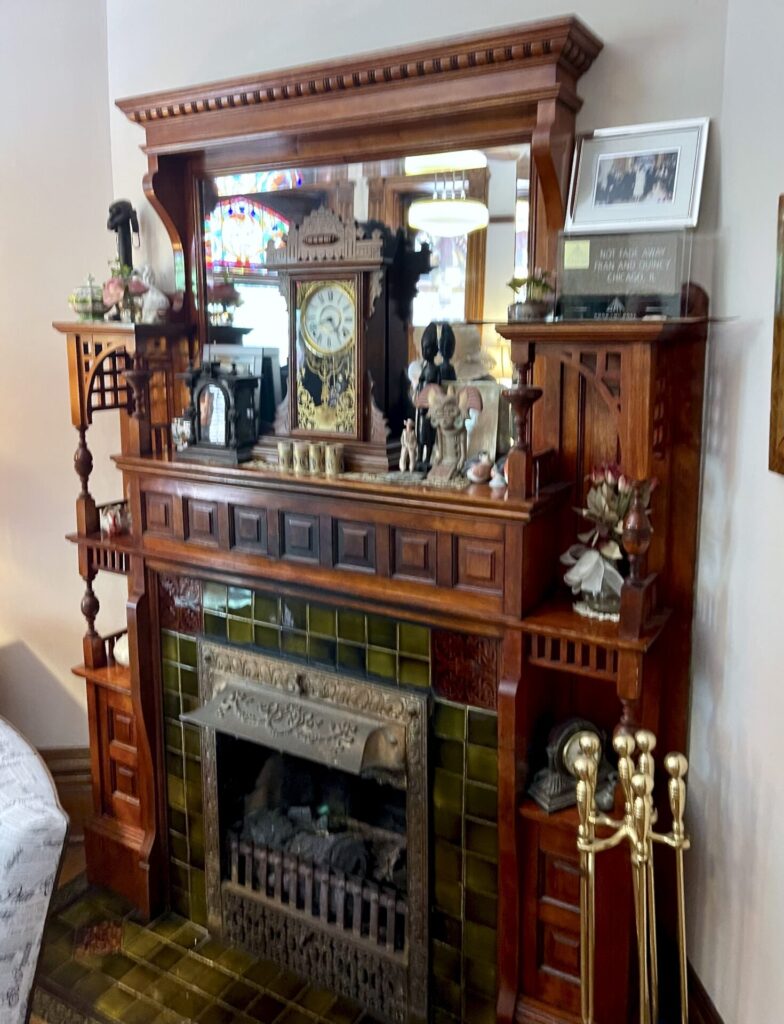
History Of Workers Cottages
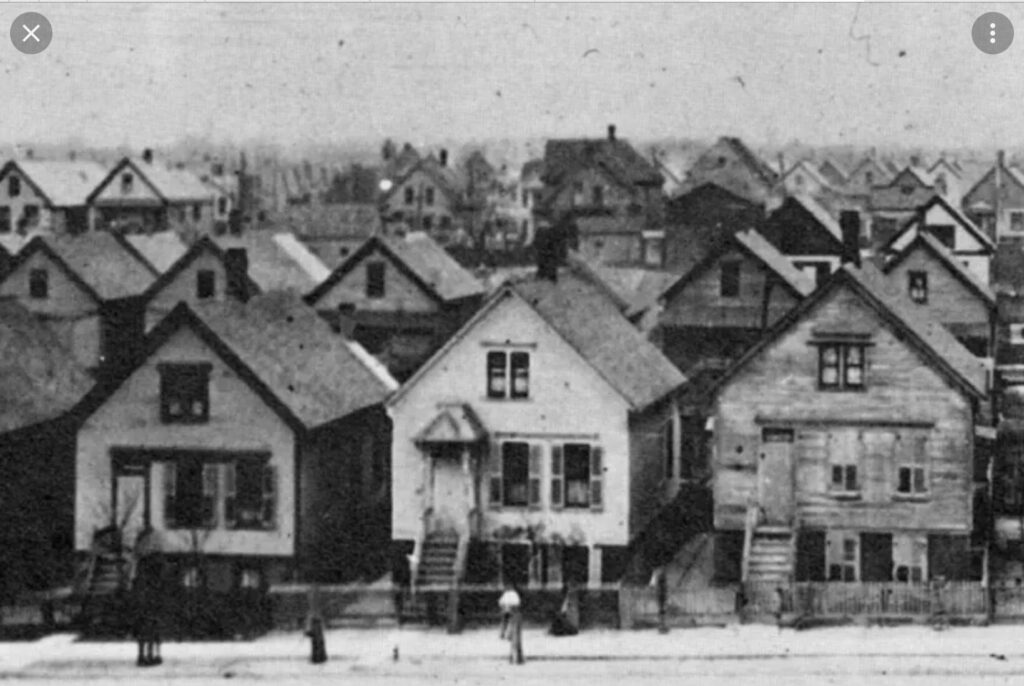
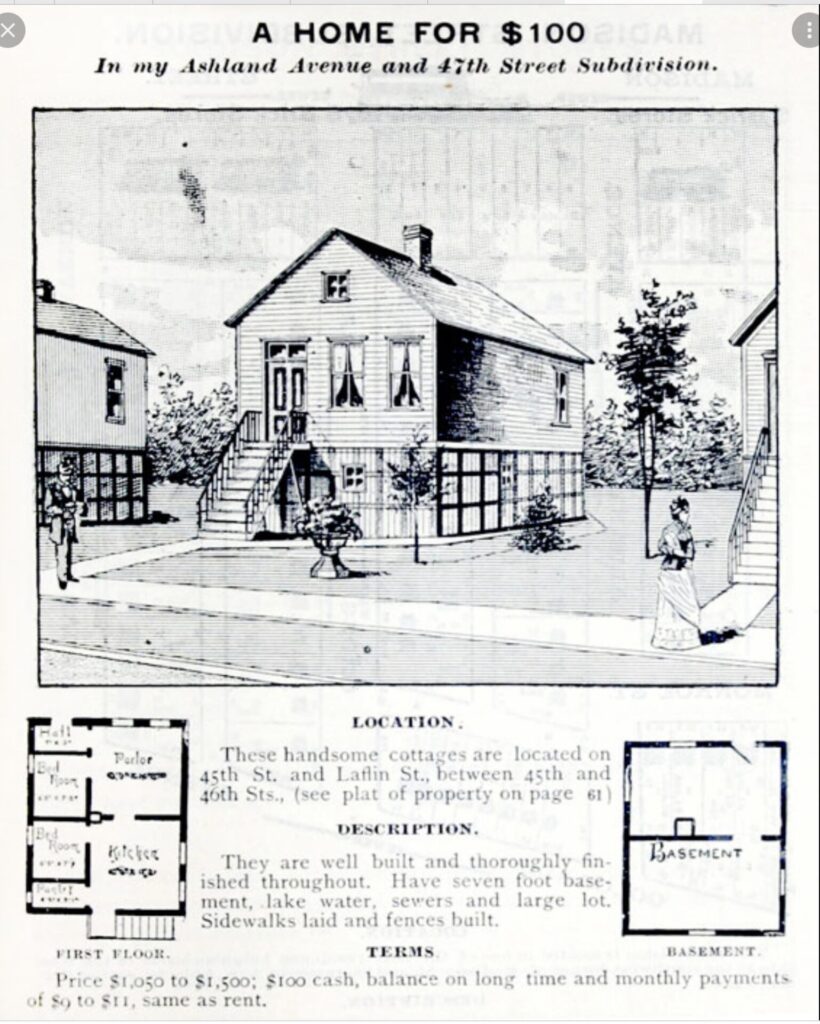
History Of N. Crilly Court
Napoleon Bonaparte

- Napoleon Bonaparte (1st)
- His Wife, The French Empress, Eugenie
- Their only child

A Chicago Farmstead in 1832
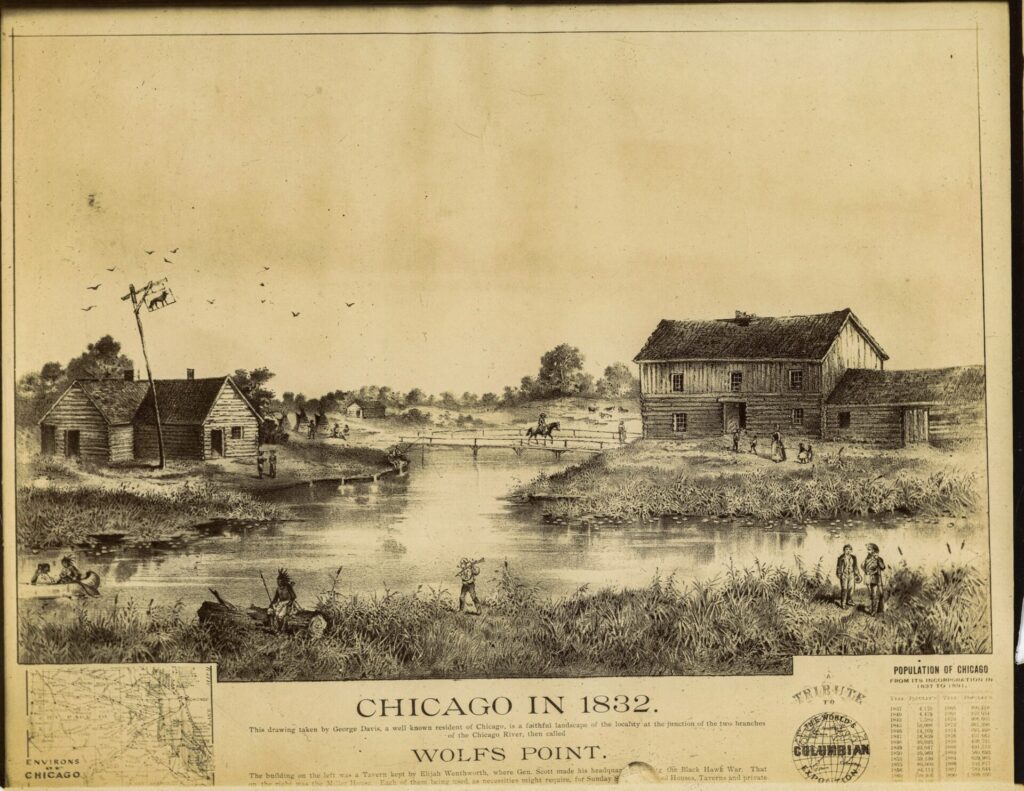
- in 1837 Chicago city limit was North Ave and Lincoln Park and Oldtown were swamp and farmland.
- A French farmer, Charles Canda, was on record in 1837
- His farmstead was located here
- His brother was Florimond Canda
- Florimind was a General in the Battle of Waterloo
- Received awards from Napoleon and Eugenie
- When Charles died he left his property to Florimond
- Florimond eventually sold to developer Daniel Crilly in the late 1800s during the housing boom
Developer Daniel Crilly’s Apartment Building – Who are all these doorways named after?
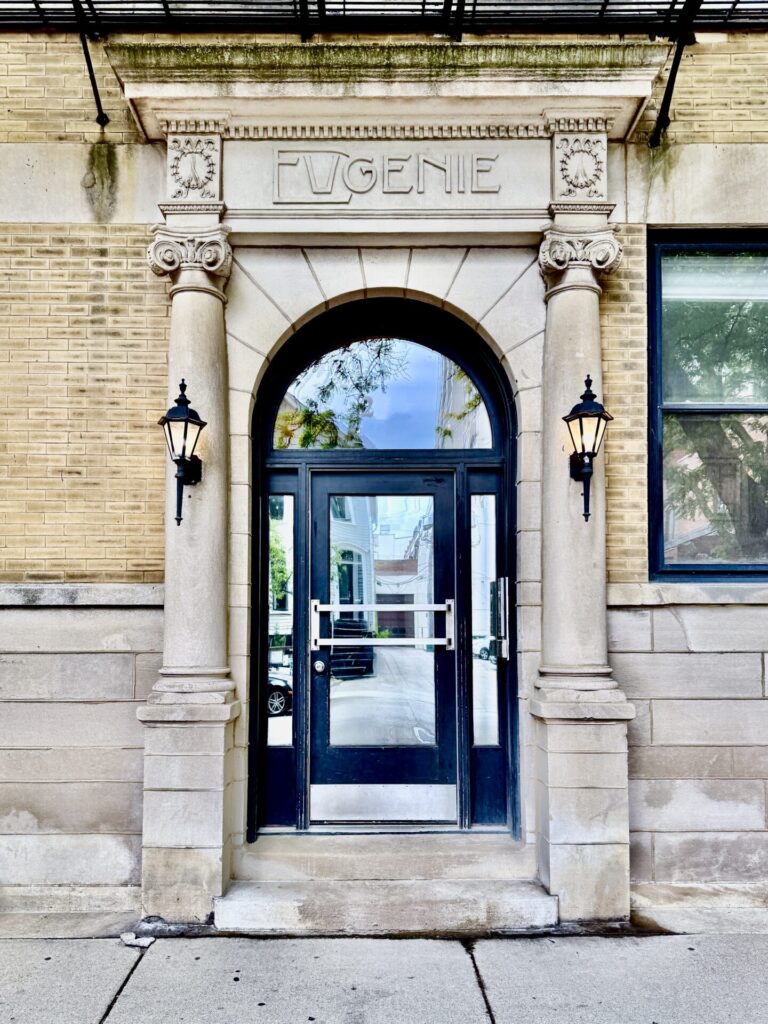

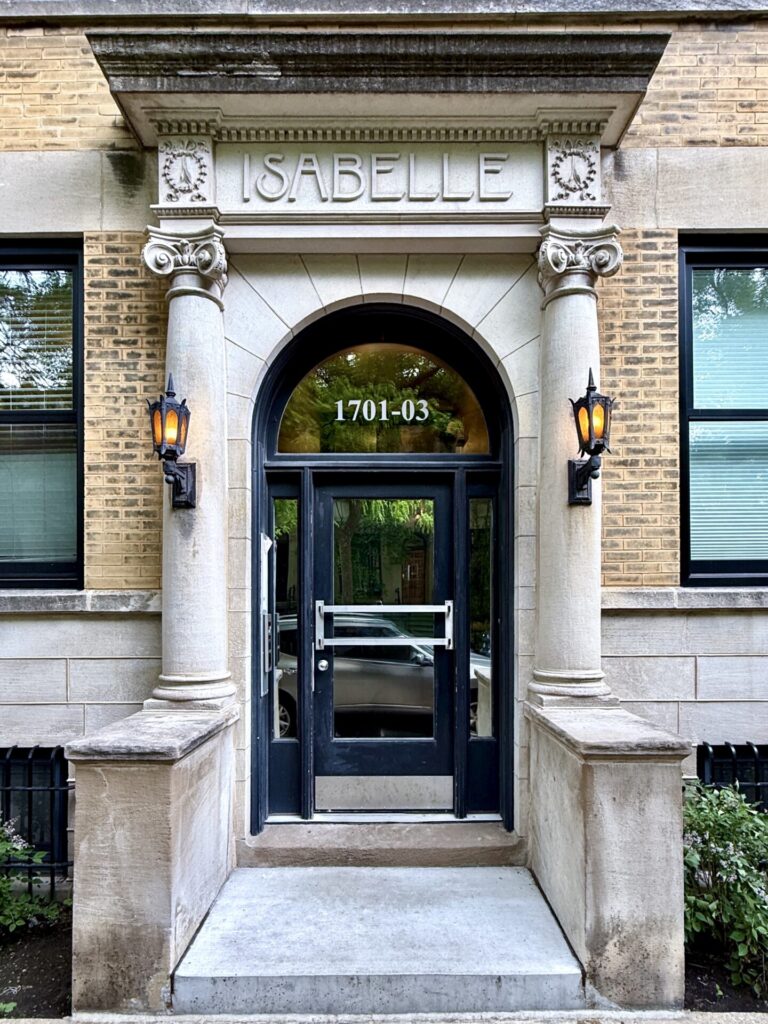
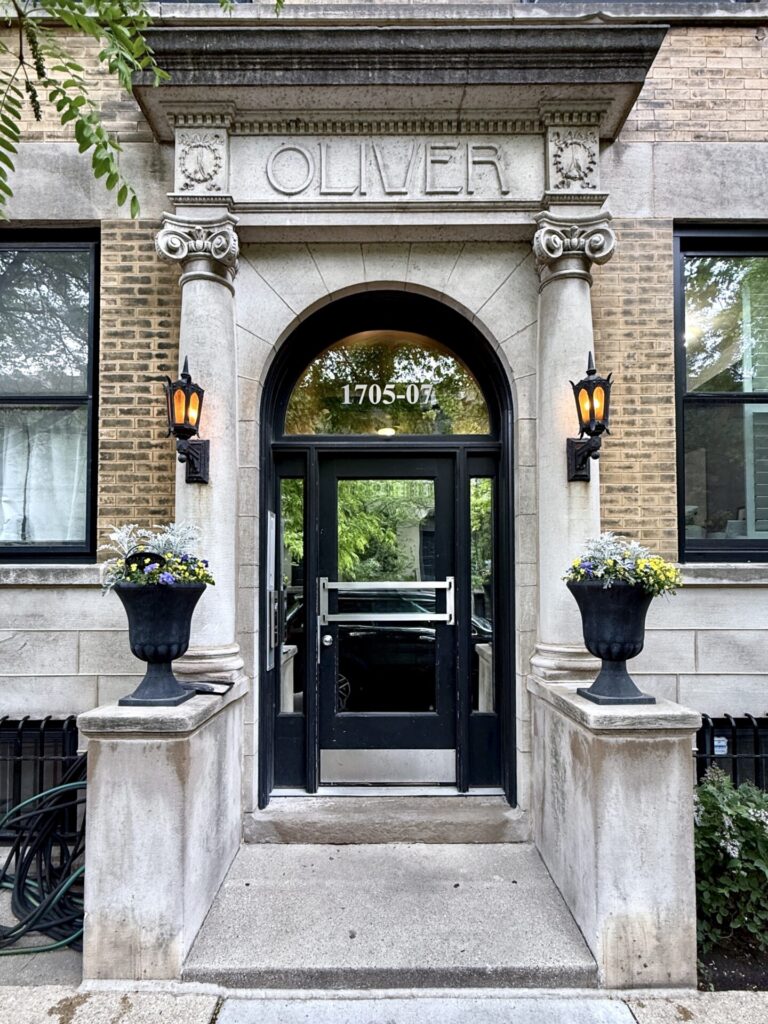

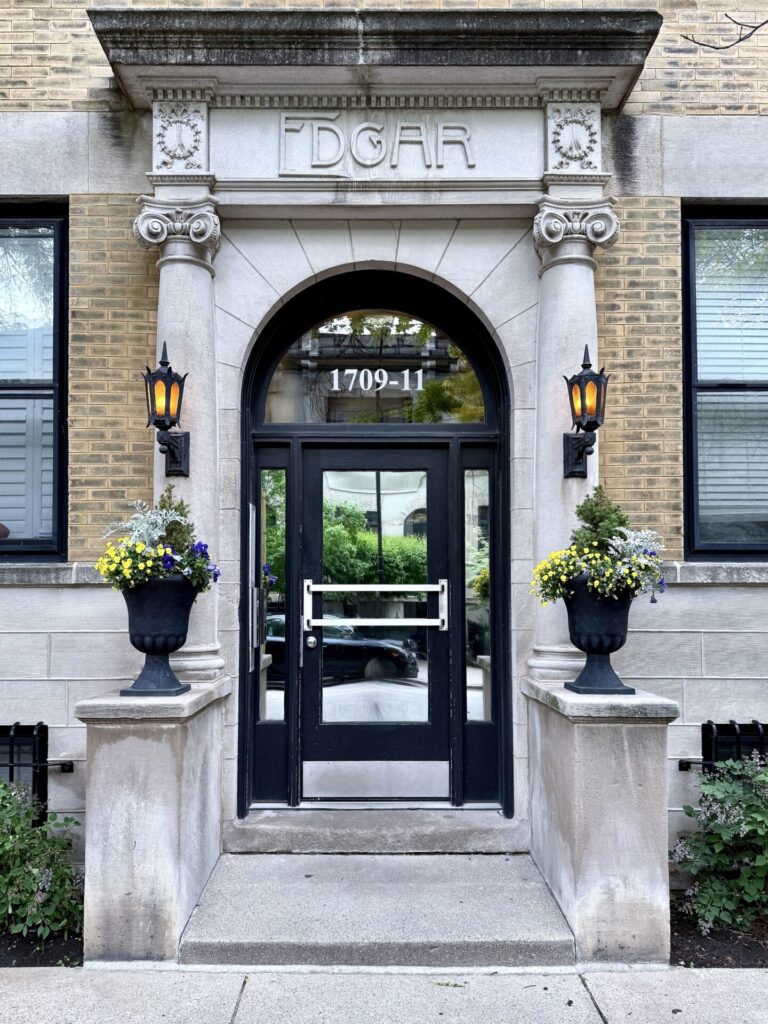
Crilly Court Resident: Haddon (Sunny) Sunbloom – Graphic Artist
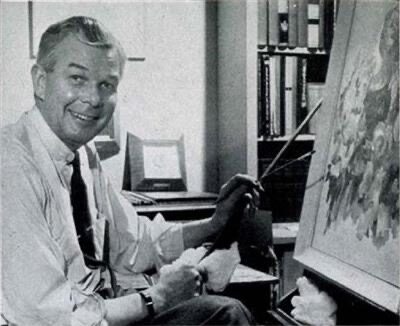
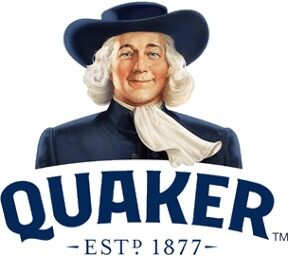

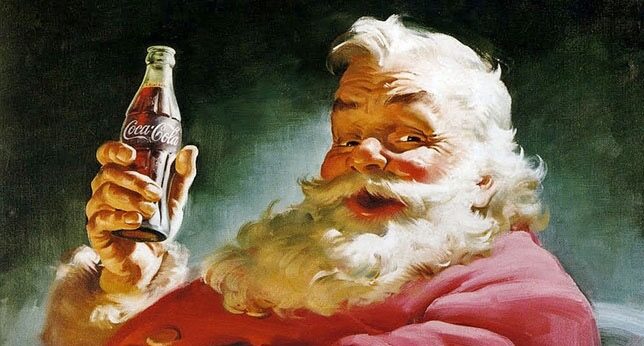

Crilly Court Resident: Rand McNally – Children’s Book / Maps & Atlases

Crilly Court Resident: George Spoor – Early Movie Producer and Partner Of Essanay Studios

In 1894 Spoor built and exhibited “The Magniscope”, the first 35 mm movie projector ever designed and used in a large audience display.
Spoor and Anderson formed Essanay Studios (combination of their last name initials).
They produced 1 & 2 reeler, black and white silent films and discovered many stars like Gloria Swanson and Charlie Chaplin.
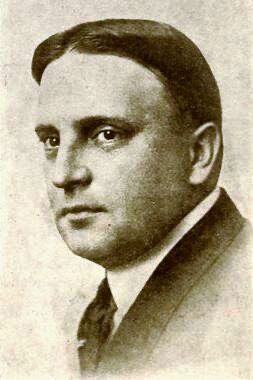


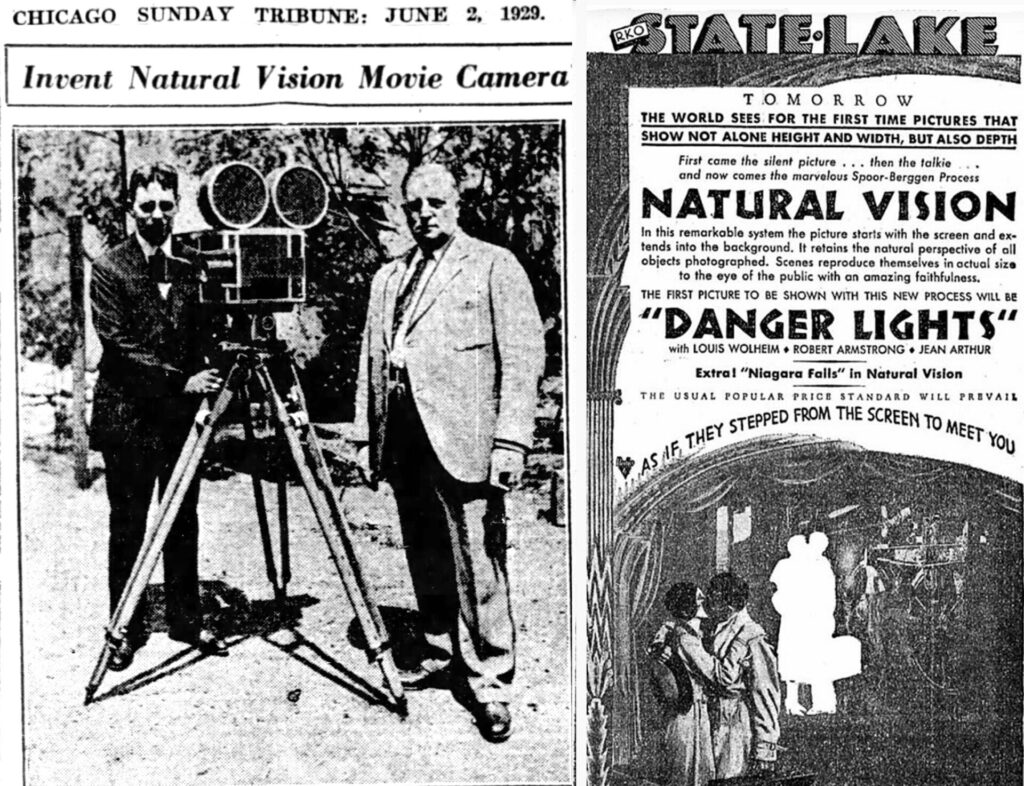

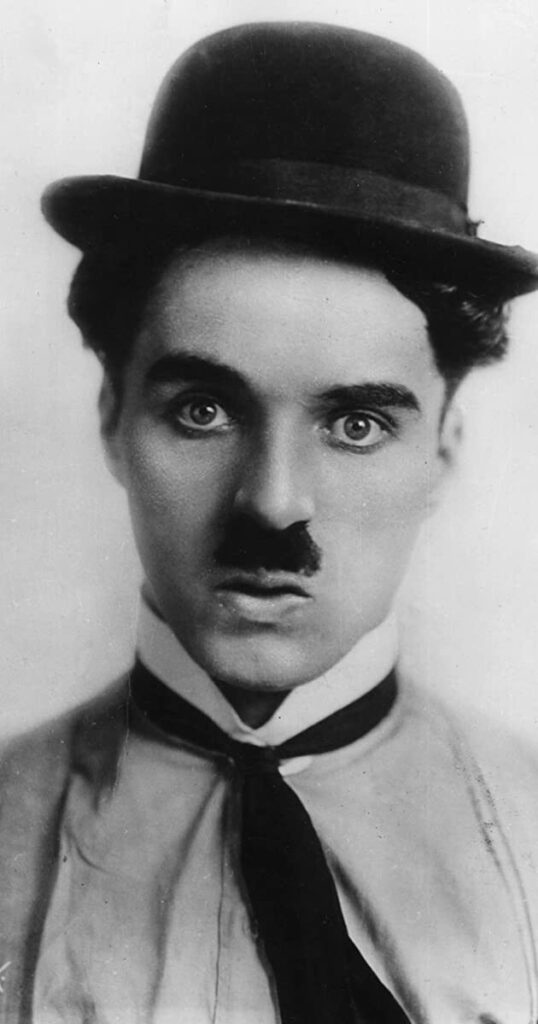
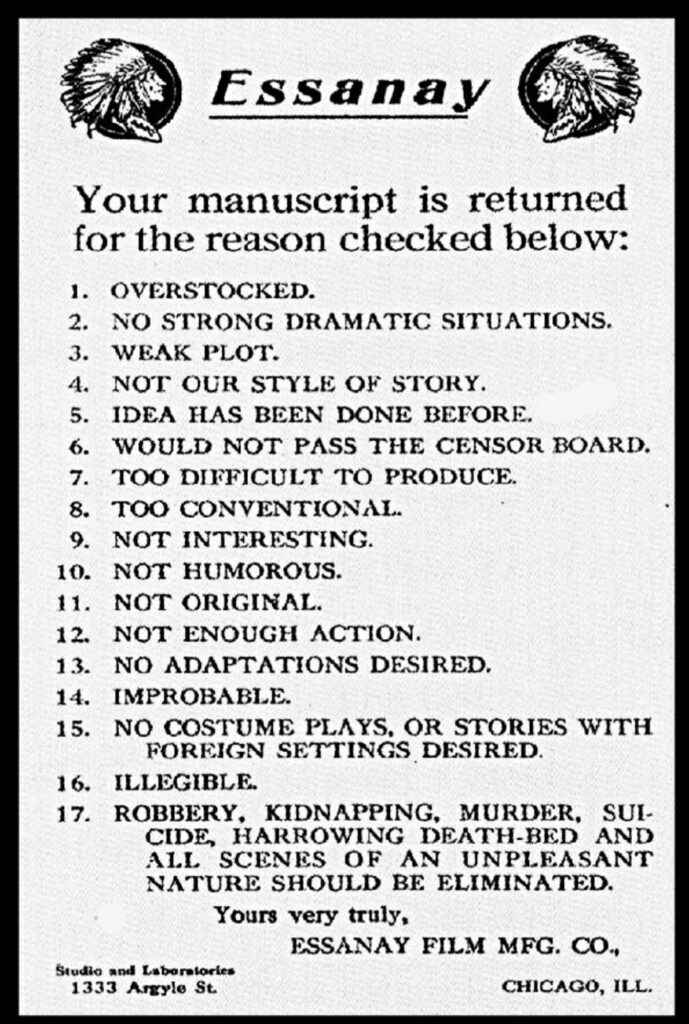
Manuscript rejection note!
Crilly Court Resident: Henry Gerber – Early Gay Activist

Between 1924-1925, Gerber founded the Society Of Human Rights and wrote the underground gay newsletter called Friendship & Freedom.
1710 N. Crilly Court is a National Landmark and 1 of only 3 National Landmarks with ties to the LGBTQ community.
The other two are New York City’s Stonewall Inn and the home of James Merrill.
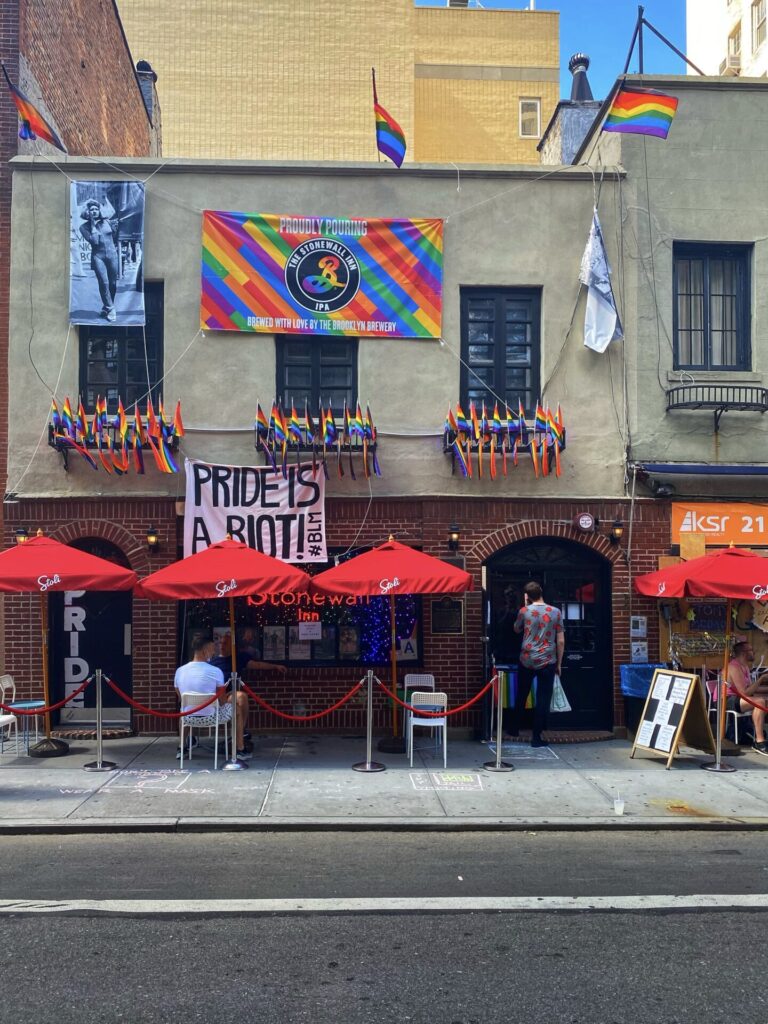
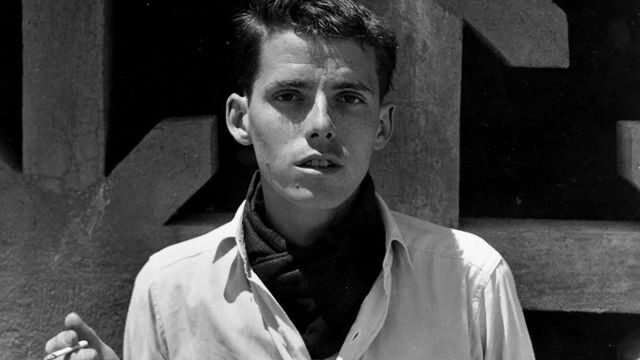
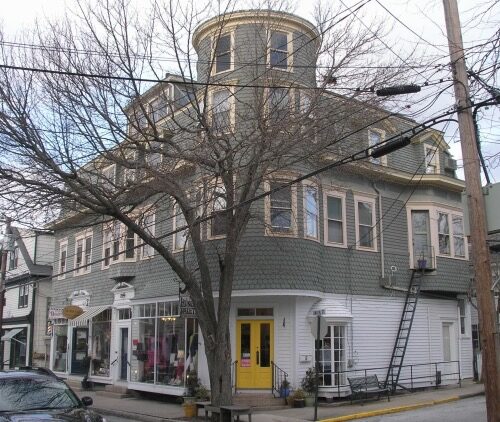
After lunch if you have time walk up to the Chicago River and check out Pioneer Court (Apple Store).

Bust of Jean Baptiste Point duSable, Chicago’s first non-indigenous settler and credited with having founded Chicago.

Jean Baptiste Point duSable’s homestead – located right where the Apple Store is!